Digital products are a popular way to monetize your website or grow your passive income. Once you’ve created a product, you can sell it over and over again to anyone who wants it. No stocking out, no shipping delays, and no painful supply chain issues in sight.
If you’re looking for the best digital products to sell in 2024, you’re in the right place. Discover everything you need to know about creating and selling digital products this year, including the best digital products to sell and how you can get started today.
What are digital products?
A digital product is a product that predominantly lives online. Unlike physical products, you can’t hold it in your hands. Instead, you “experience” it via your web browser or device.
We’re talking about things like ebooks, downloadable guides, paid communities and apps — intangible products that are created, distributed, and consumed in a digital environment.
Many digital products take inspiration from physical products, like ebooks versus actual books, or digital planners versus real planners that you write in with a good old-fashioned pen.
But there are plenty of digital products that have been created especially for an online audience. We’re covering both types of digital products here, alongside a bunch of inspiring examples you can use to come up with your own ideas.
Why sell digital products?
The speedy evolution of technology would have us believe that we’re not too far off from living our lives online. But keeping up with changing consumer habits and the advanced state of the digital world aren’t the only benefits of selling digital products.
Sell over and over again
Unlike physical products, you can never sell out of digital products. Where you’d have to stay on top of inventory and keep stock levels high in the physical world, the digital world is different. Once you’ve created a digital product, you can sell it over and over again without needing to order more or wrestle with complex supply chains.
Generate passive income
We’d all like to make money while sitting on a beach sipping mojitos. The reality is that you can be a digital nomad with digital products. It takes time to build consistent sales, but once you’ve put in the upfront work and set up your sales system, you can sit back and enjoy the money that comes in on autopilot.
Scale quickly and easily
Digital products require no physical storage space. You don’t need to ramp up manufacturing to meet growing demand. In fact, it’s the same amount of work to sell one digital product as it is to sell 1,000.
Low startup and running costs
There’s a digital product for every budget, but most don’t require a hefty upfront investment to get started. Instead, you can choose a product that fits your budget — the only expense is WiFi, a device to create on, and your time. And very little changes when you grow. Costs are still limited to any tools you need to manage sales and an internet connection.
Freedom and flexibility
Who doesn’t want more freedom? Fancy hopping on a flight to Rome on a random Wednesday afternoon? Want to take an ad-hoc morning off to go swimming with the kids? These dreams are closer than you think when you sell digital products. With passive income trickling in, you can spend more time doing the things you love.
Reach more people
Digital products are often a lot more accessible both in pricing and in location. While you might be limited in who you can sell a physical product or service to, the possibilities are endless with digital products.
Different types of digital products to sell
The great thing about the internet is that pretty much anything is possible - there’s no limit to the creativity out there.
That being said, certain digital products are more common than others:
- Ebooks and downloadables: Including digital versions of fictional books, practical guides, and downloadable checklists, workbooks, and planners. Basically, anything you can download and read or print out.
- Software: Widgets, plugins, website templates, apps, and tools all make great digital products. There’s some upfront effort involved, but once you’ve designed and made a piece of software, you can sell it countless times.
- Digital media: We’re talking about things like paid podcasts, newsletters, stock photography, stock video, and magazine subscriptions. You can monetize these things in different ways. For example, you can ask customers to pay a one-off fee, you can offer a subscription, or you can sell ads in your chosen media type.
- Online courses and masterclasses: Create a course, tutorial video, or masterclass that walks people through a specific solution or task.
- Memberships and communities: Memberships and online communities bring like-minded people together in exchange for a set monthly fee. A lot of the time, paid members get exclusive content.
🏆 The best digital products to sell online
1. Membership sites
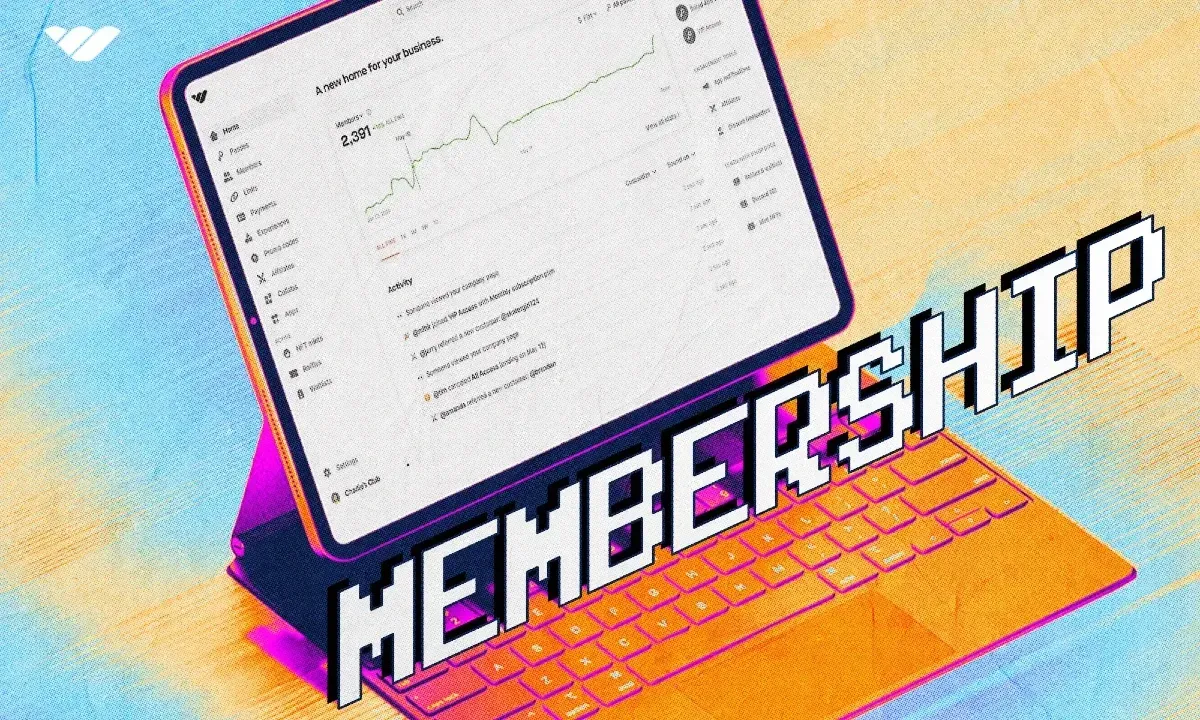
Memberships are a great way to build a community around your brand. They provide an exclusive feel and often deliver premium services or perks to paying members.
What your membership includes will depend on your brand and audience. You could offer access to a schedule of relevant online talks, digital coworking sessions, or video coaching in exchange for a monthly fee.
2. Online courses

Get paid for sharing your knowledge with an online course. The parameters are broad; you can build a course for online traders, show freelancers how to land clients or share your experience going viral on social media.
The best part is, that once you’ve created the building blocks of your online course, you can sell it to hundreds of thousands of students. Just remember to update it regularly to ensure students are getting the best bang for their buck.
Example: Trading community Team Bull Trading has a course covering everything from basic trading strategies to advanced indicators.
3. Ebooks
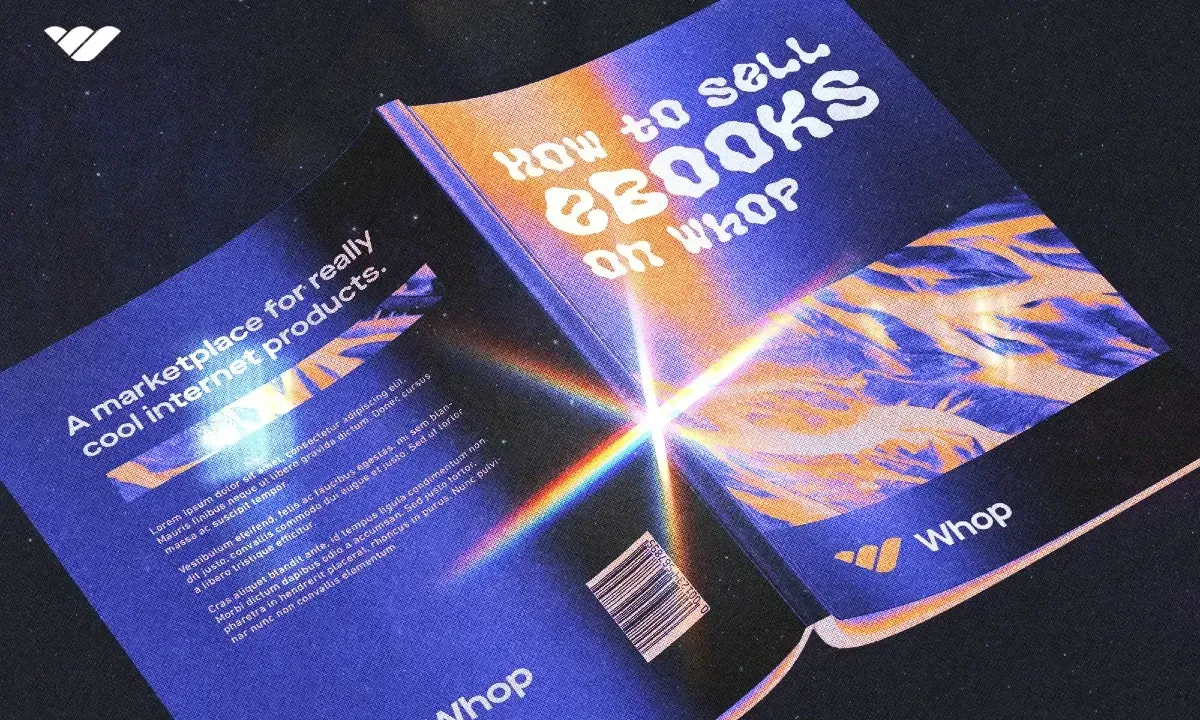
If you don’t fancy creating an online course, why not share your knowledge in an ebook format? Once you’ve written your content, you can publish it on sites like Whop, Amazon, and other digital platforms to increase your reach. Again, once you’ve put in the effort upfront, you can continue to reap the rewards long after you’ve published your ebook.
Example: This ebook is a guide to becoming an online entrepreneur and sells for $4.99.
4. Tutorials
Provide a walkthrough of a complicated topic or a solution to a pain point a specific audience has. Tutorials can come in video format, guides, or interactive content — whatever method best suits your teaching topic. Similarly to online courses, you can guide buyers through a learning curve, whether it’s how to crochet a frog or make the best cheese sauce.
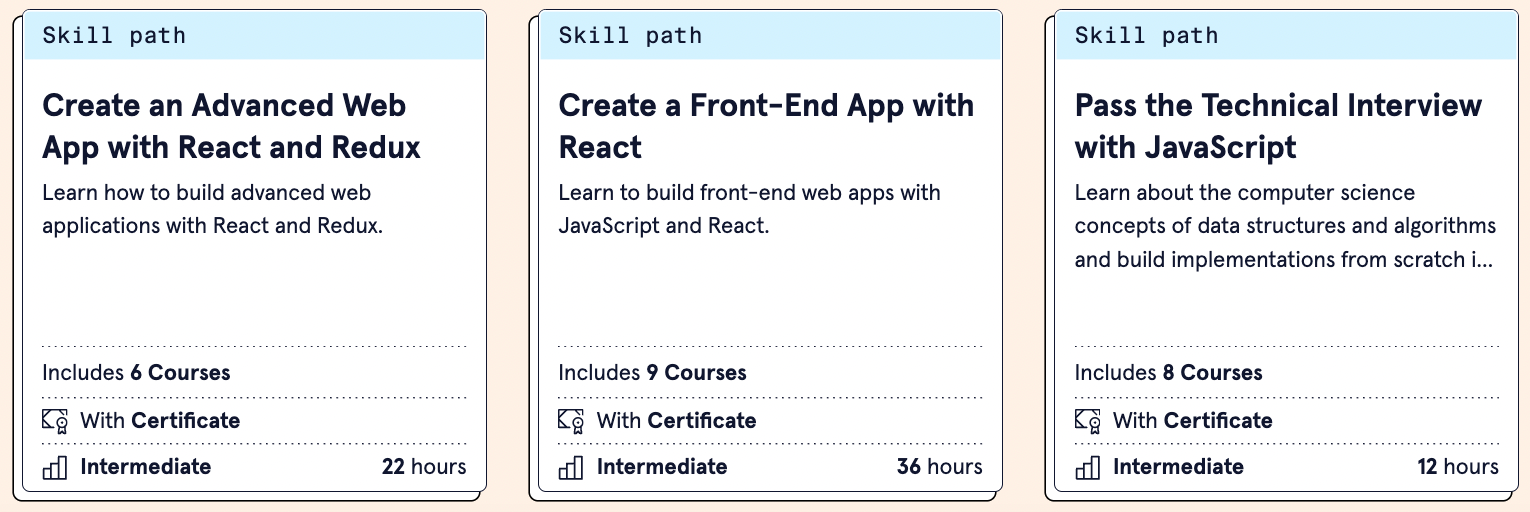
Example: Codecademy has a ton of tutorials for people who want to learn to code either for their career or for fun.
5. Prints
If you’ve got a creative streak and enjoy drawing or painting, you can turn your masterpieces into sellable prints. There are print-on-demand platforms you can upload your artwork to and have it transferred onto mugs, t-shirts, notebooks, and other physical products — or you can simply sell it as a wall print.
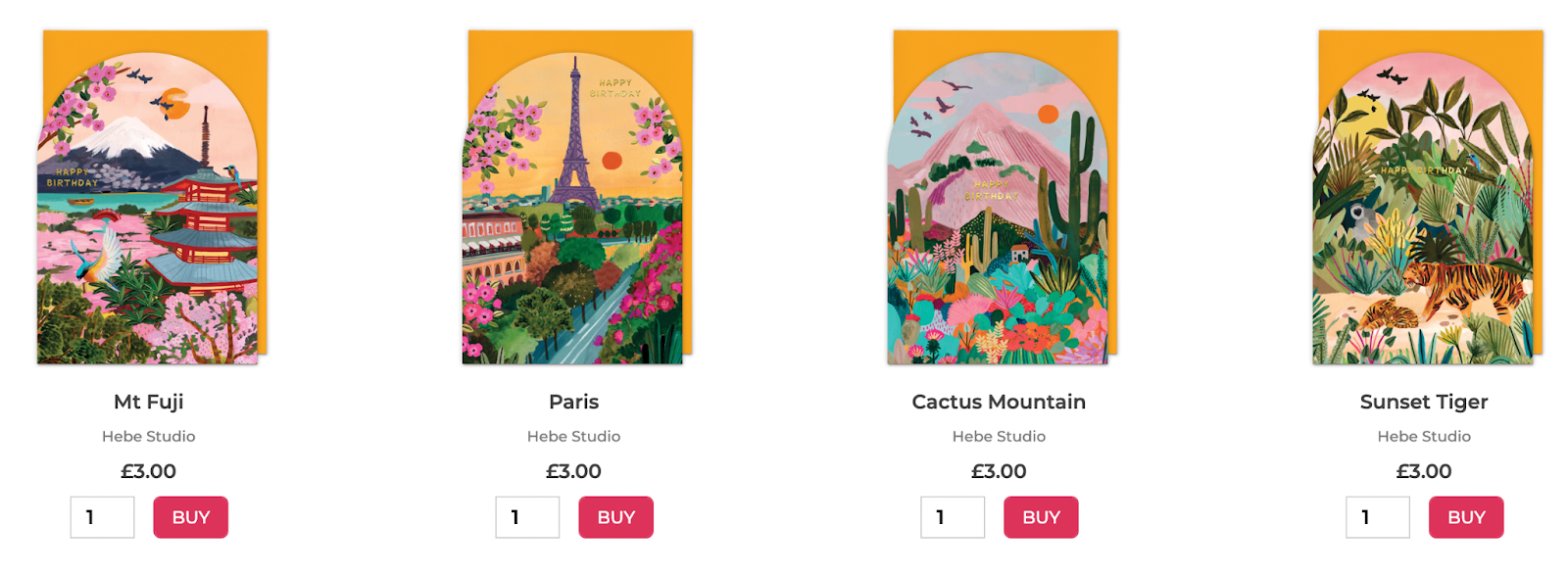
Example: Hebe Studio transfers vibrant travel artwork onto cards, tea towels, notebooks, and other stationery.
6. Planners and journals
Help people stay organized by selling online or printable planners and journals. You can create standard organizers arranged by month and week, or you can sell planners and journals for specific purposes — like journals for small business owners or travel planners.
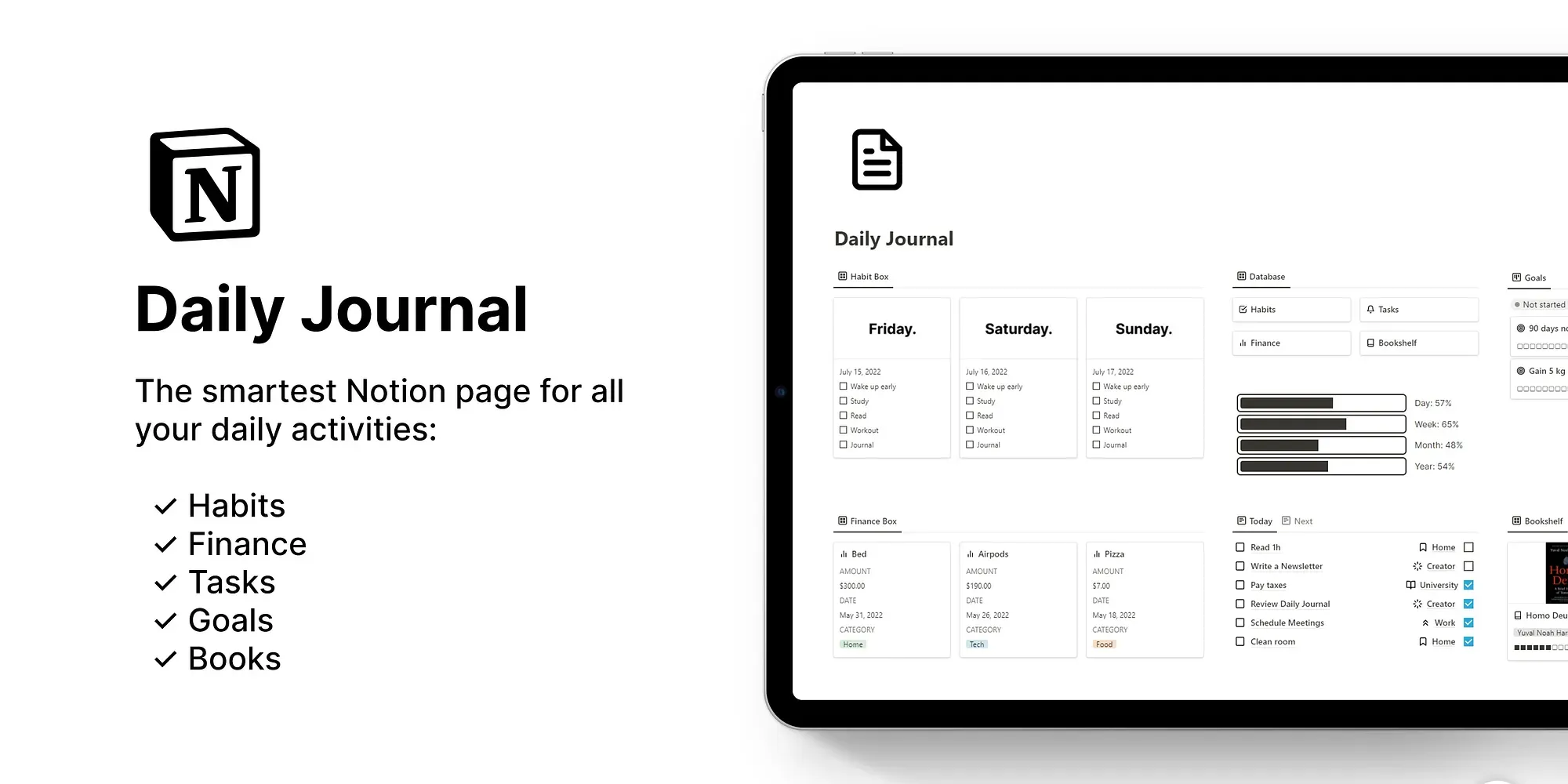
Example: Daily Journal is an ultimate life tracker, with sections for habits, finance, goals, tasks, and books.
7. Subscriptions

Digital subscriptions work similarly to memberships: people pay a monthly fee in exchange for access to a tool or exclusive content.
You’ll most commonly see subscriptions applied to physical products, like coffee, makeup, or snacks, but there’s no reason why you can’t sell a digital subscription for a niche magazine or a monthly recipe program.
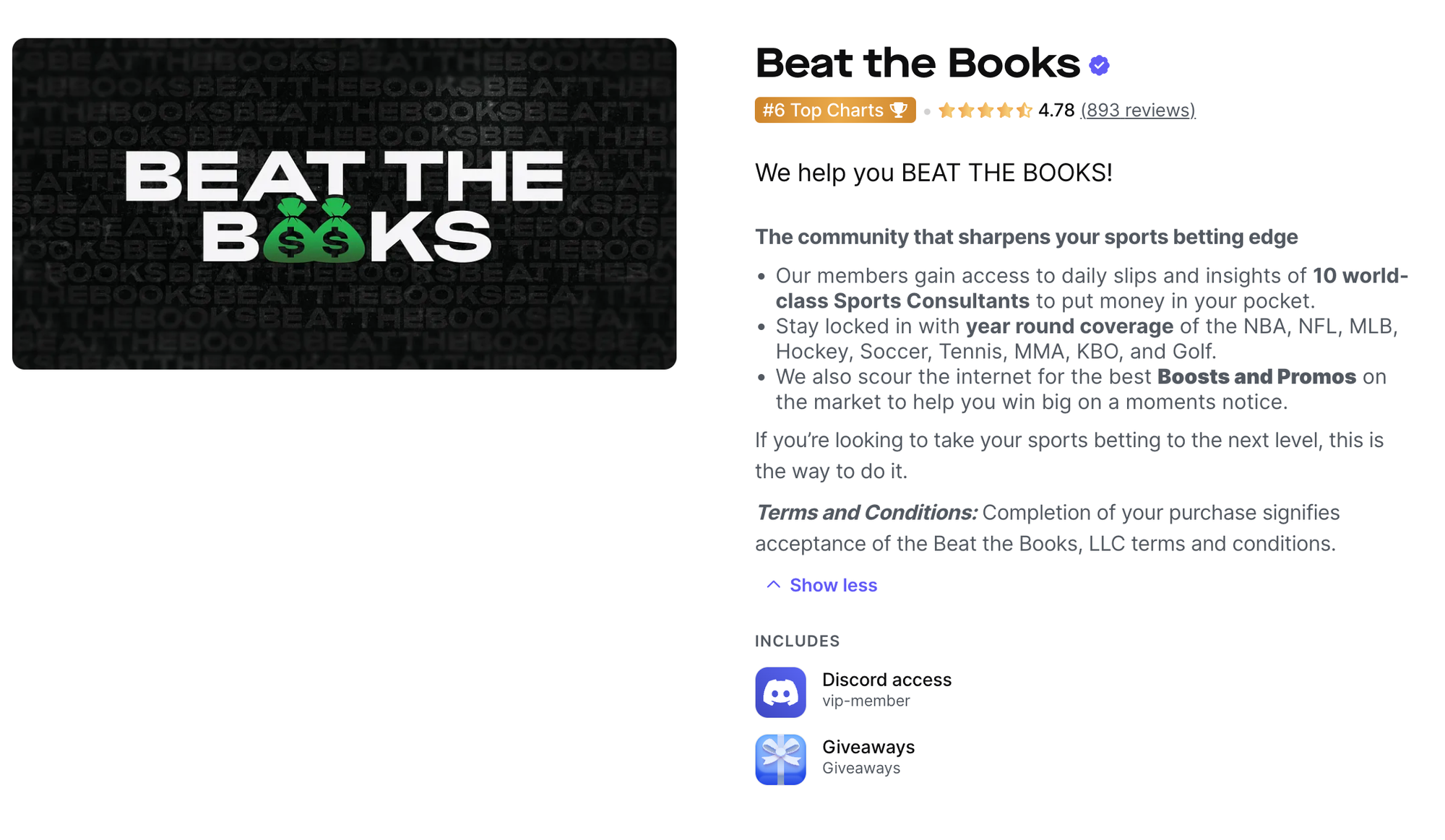
Example: Beat the Books has a monthly subscription for sports picks, insights, promos and betting education on Discord.
8. Software

Building a piece of software requires some dedicated upfront effort (and a certain amount of skill and knowledge).
But, once you’ve got your product, you can sell it to as many people as you like. If you’re not particularly tech-savvy, you can learn some easy coding techniques, use a no-code tool to build your software product, or hire someone to help you make the initial product.
9. Stock photos
Are you a natural behind the camera? If friends and family are often asking you to shoot their weddings, birthdays, and baby showers, why not monetise your skill? Stock photo sites like Shutterstock, Unsplash, and Getty Images pay budding photographers each time someone downloads their image.
Some popular image types include:
- Landscape photos
- Flat-lay photos of desk spaces
- City scenes
- Business-related snaps of meetings and offices
- Still-life pics of flowers and objects

Shutterstock has thousands of photos (both free and paid-for) on its digital marketplace.
10. Stock videos
If you’re better at filming video footage than taking stills, consider selling your scenes on stock video sites. These are becoming increasingly common as people start to experiment more with social videos like Instagram Reels and TikTok.
11. Spreadsheets
Spreadsheets are a bugbear for a lot of people, but if you’re a whizz at Excel formulas, you can make some money helping people ease the pain.
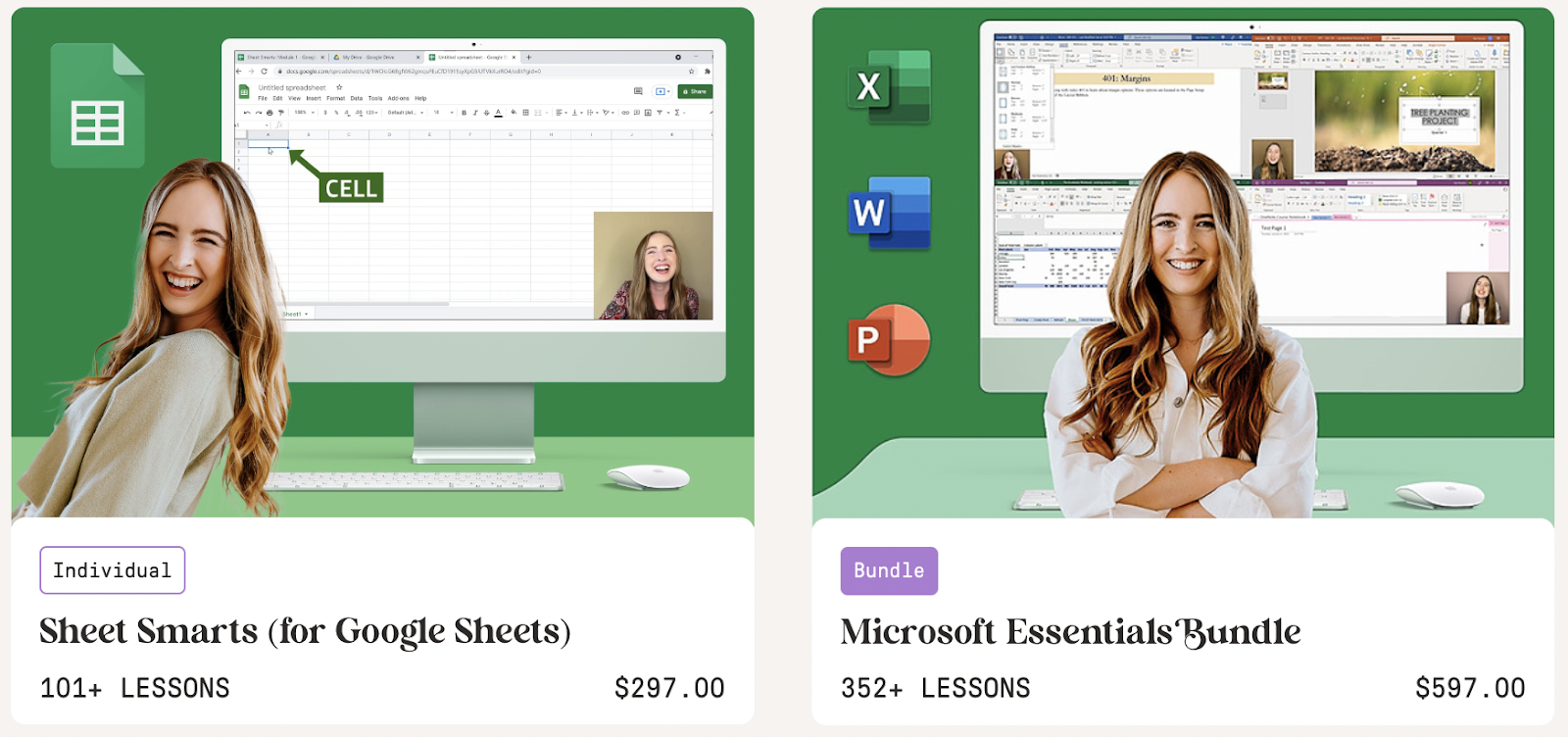
Example: Miss Excel is a great example of someone who has turned spreadsheets into a lucrative digital product business. She sells Excel templates and courses to people who want to get better at using the tool.
12. Digital artwork
While print-on-demand websites let you turn your artwork into printable products, you can also sell digital artwork that stays on screen. We’re talking about things like desktop wallpapers, phone backgrounds, and vectors.
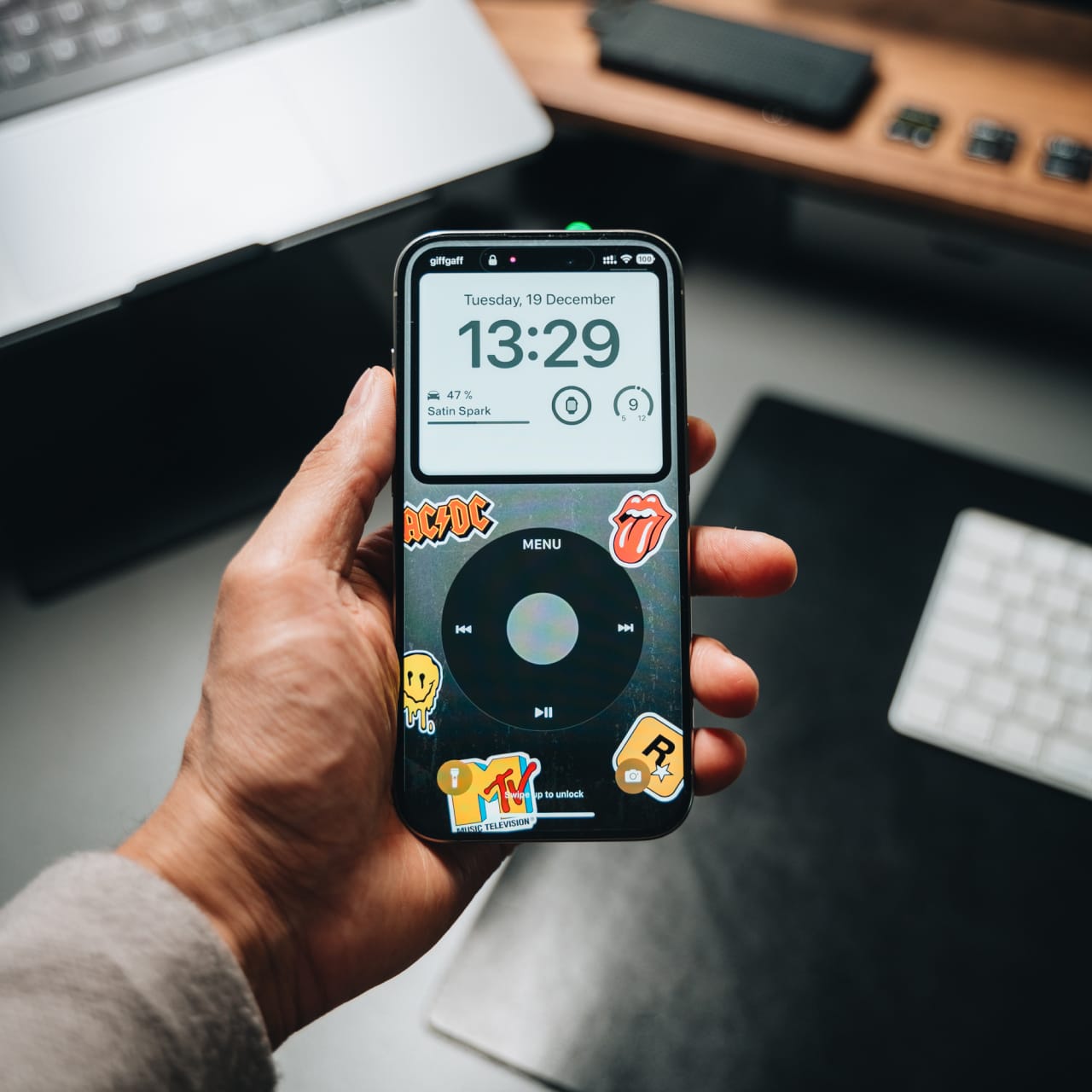
Example: Graphic designer Oliur sells iPod style wallpaper packs for iPhones.
13. Downloadable checklists
Create some digital to-dos around an area of interest or put together a downloadable checklist that helps people complete a specific task. For example, you might sell a checklist for website essentials, moving house, or a cleaning rota.
14. Guides and worksheets
Get hands-on with guides and worksheets. Walk people through a solution or give them a document they can fill out in their own time. Downloadable versions of guides and worksheets can either be used online or printed out and used as a physical copy.
Examples of guides and worksheets include:
- A workbook for discovering and exploring your human design
- A guide to setting up an Instagram profile
- A guide and worksheet for learning about dietary needs
- A guidebook for understanding interior design
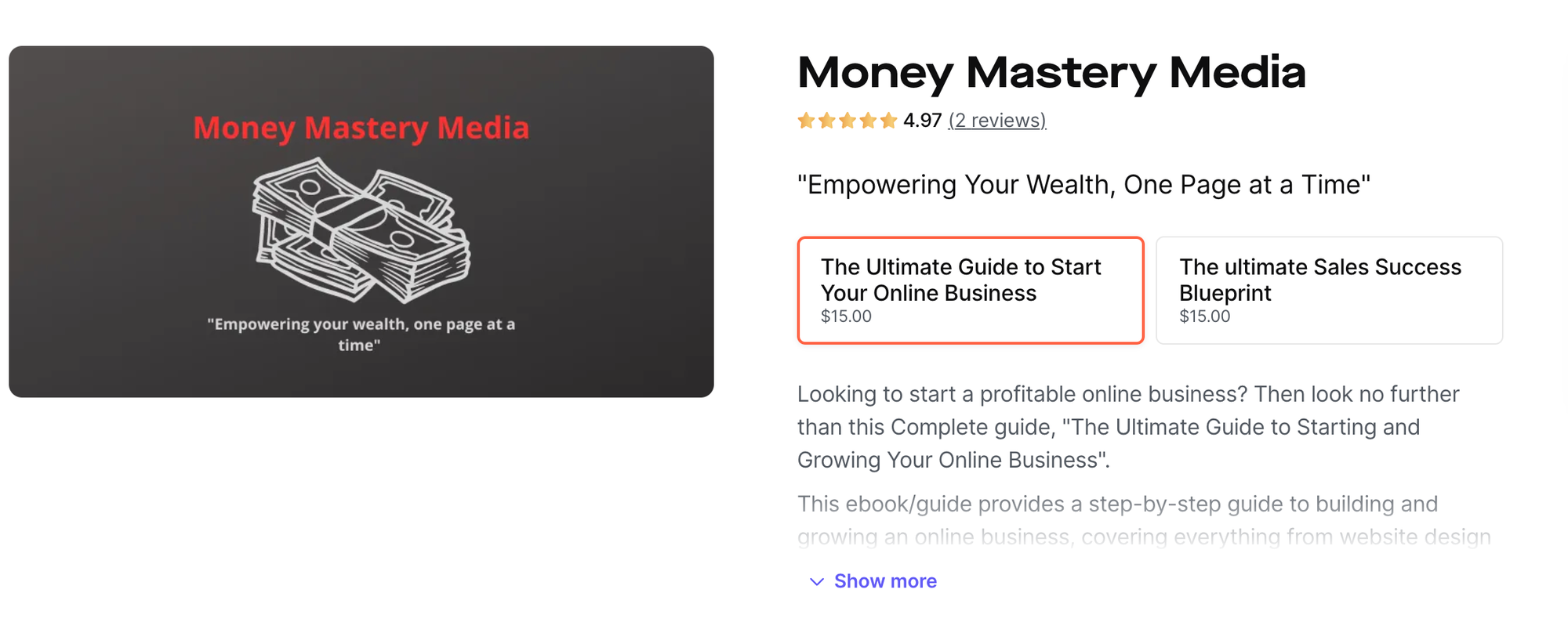
Example: Money Mastery Media sells a guide on 'how to start your online business' for $15.00.
15. Newsletters
Newsletters are a great way to grow an audience and become an expert on a chosen topic. There are several ways you can monetise your subscriber count, including running paid ads, partnering with brands, and setting up a paid tier that goes above and beyond the regular content delivered in your newsletter.
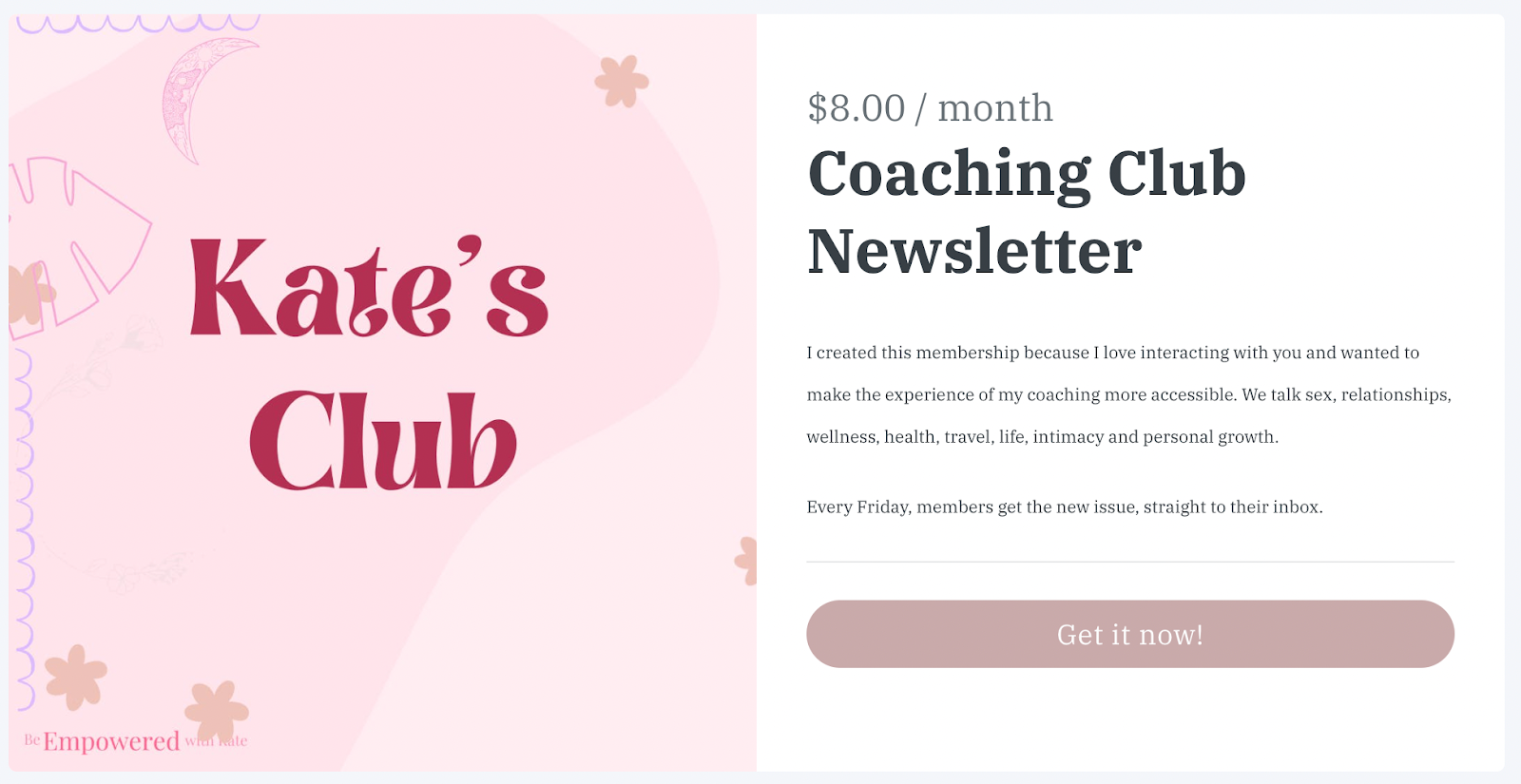
Example: Therapist Kate Marley sends a weekly deep-dive coaching newsletter to subscribers who pay $8 a month.
16. Online communities

Despite the growing remote work trend, plenty of people still crave connection with other humans. Online communities provide a place for people with specialist interests to get together and socialise — even if it is through a screen. The best part is, that you don’t even have to offer exclusive content like you would in a membership program. Instead, the value is in the connections and the ability to meet other like-minded people.
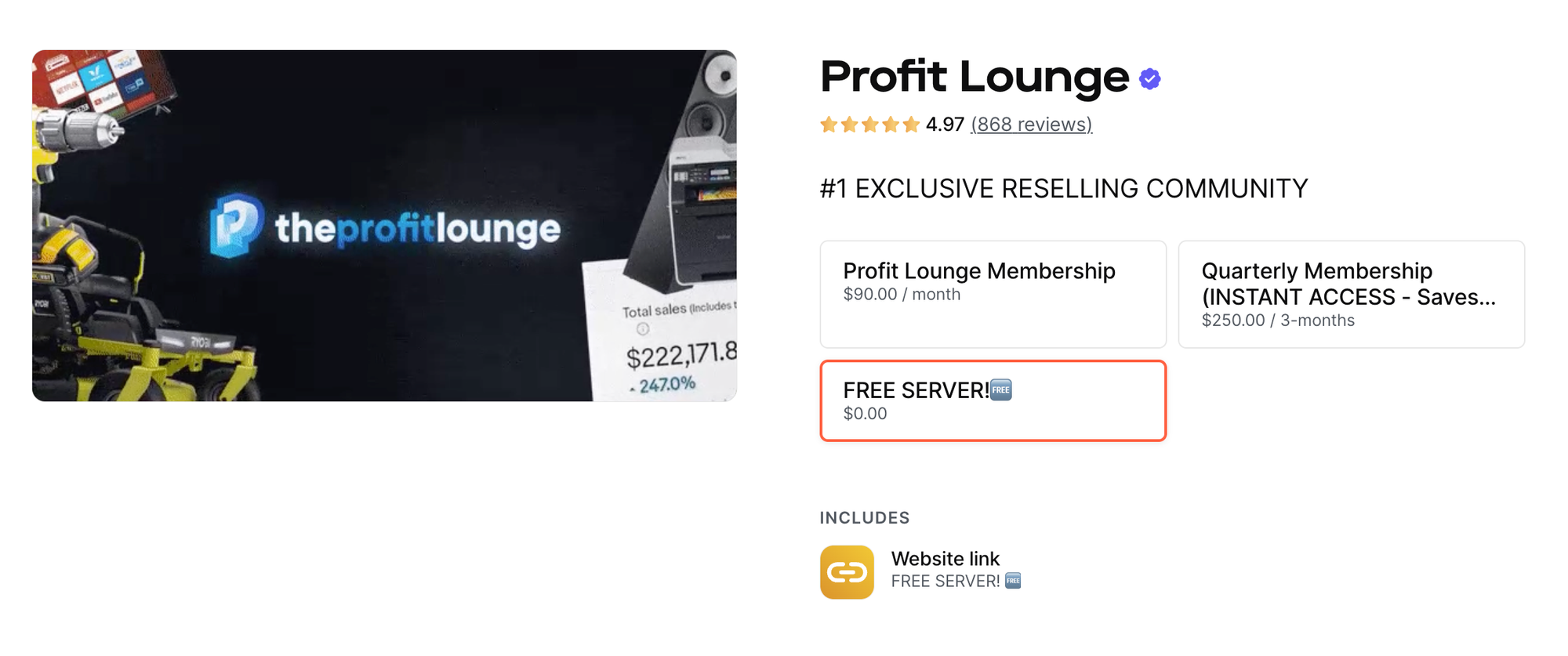
There are a few platforms that support paid online communities:
17. Video courses
If you’ve got something to teach and don’t want to create a full-on interactive course, you can sell a video series or a video course. Simply film a lesson or two and upload them to YouTube via a paywall, or use a platform like Whop or Podia.
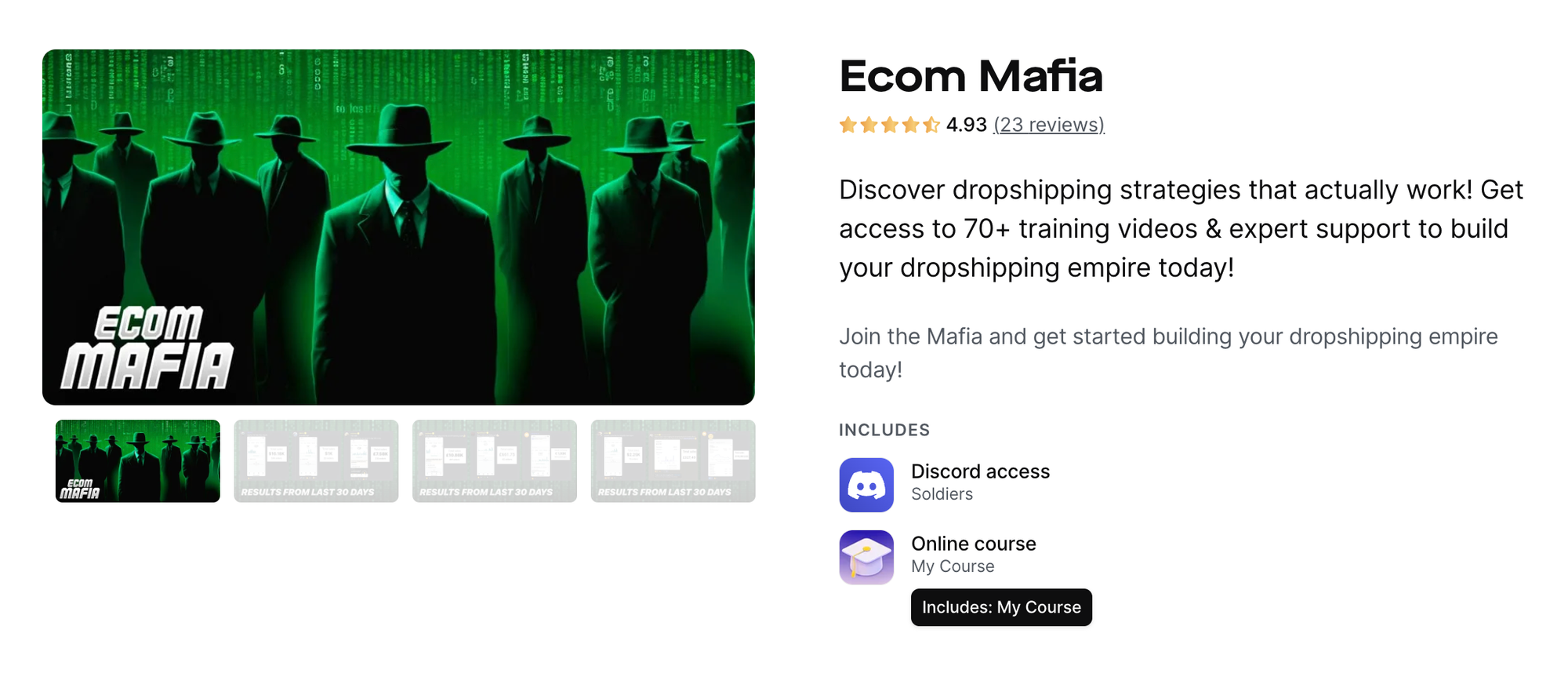
18. Templates
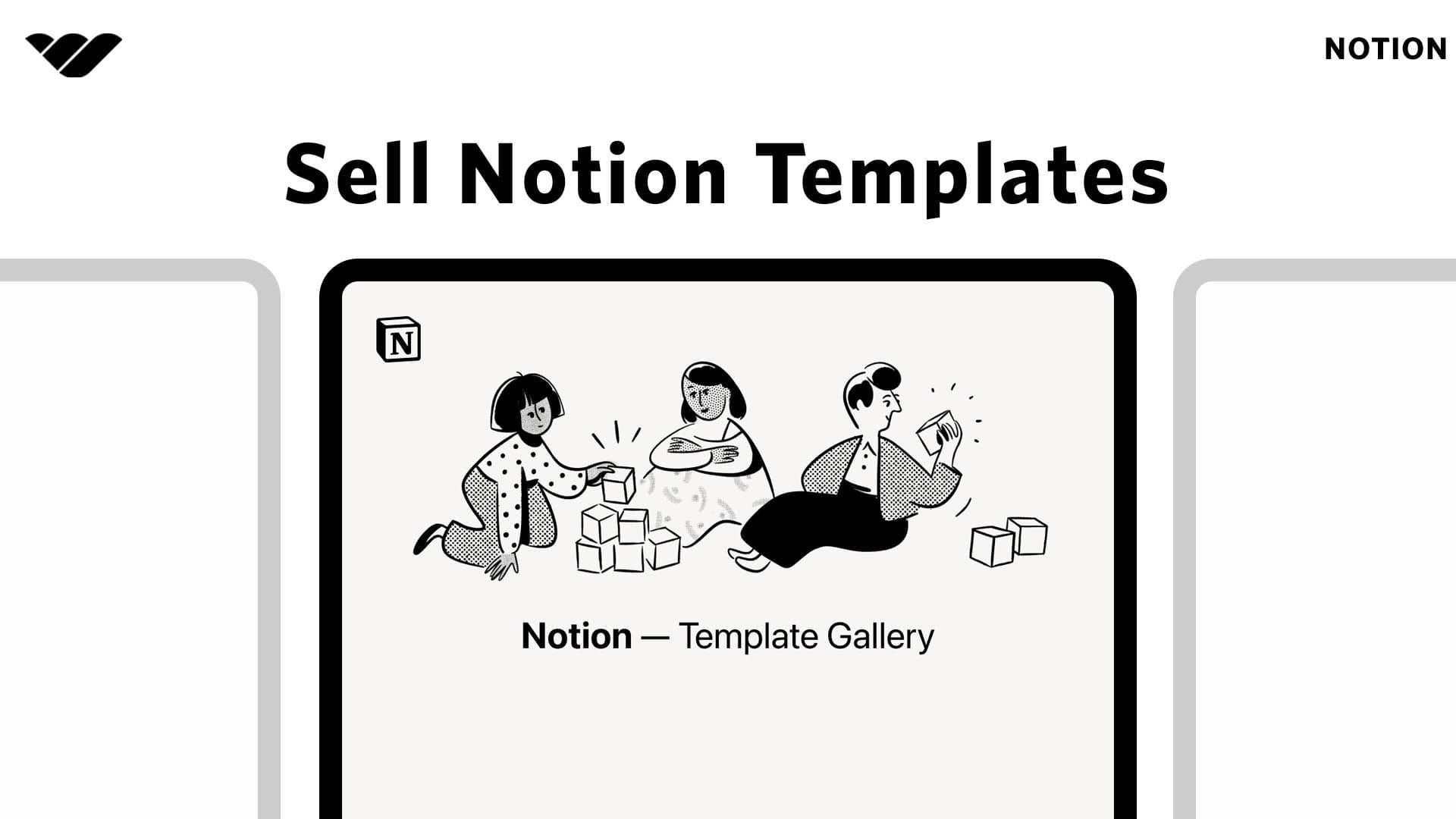
Make people’s lives easier by selling downloadable or digital templates. There are so many ways you can present these — for example, lots of creators have jumped on the Notion bandwagon to create templates for different audience segments.
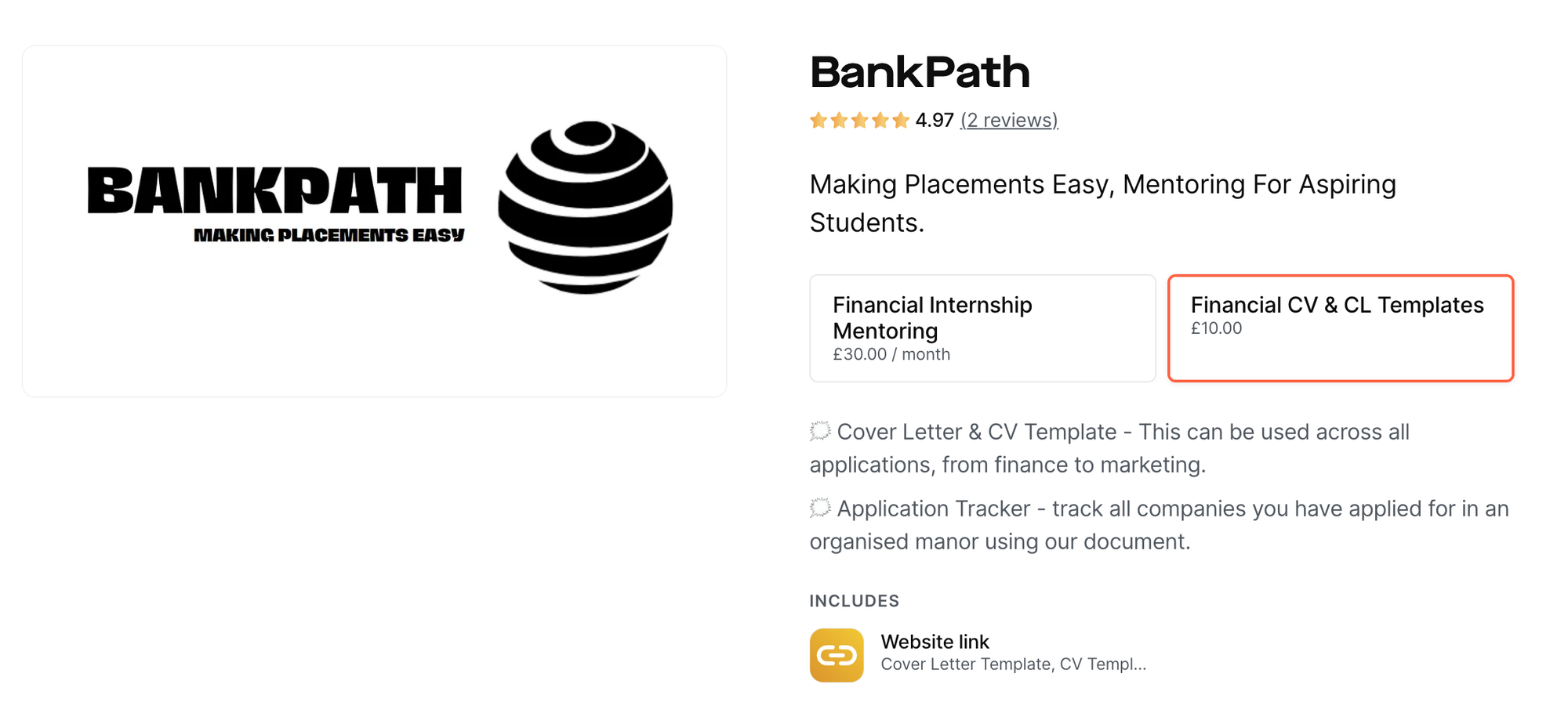
Example: Take BankPath, for example, an online business focused on 'making placements easy' for students with financial cover letter and CV templates.
19. Calendars and trackers
Similarly to planners and journals, calendars and trackers help people stick to a routine or plan a specific task they need to do. You might create a tracker for journalists to help them pitch publications or a workout calendar for people looking to get healthier in the New Year.
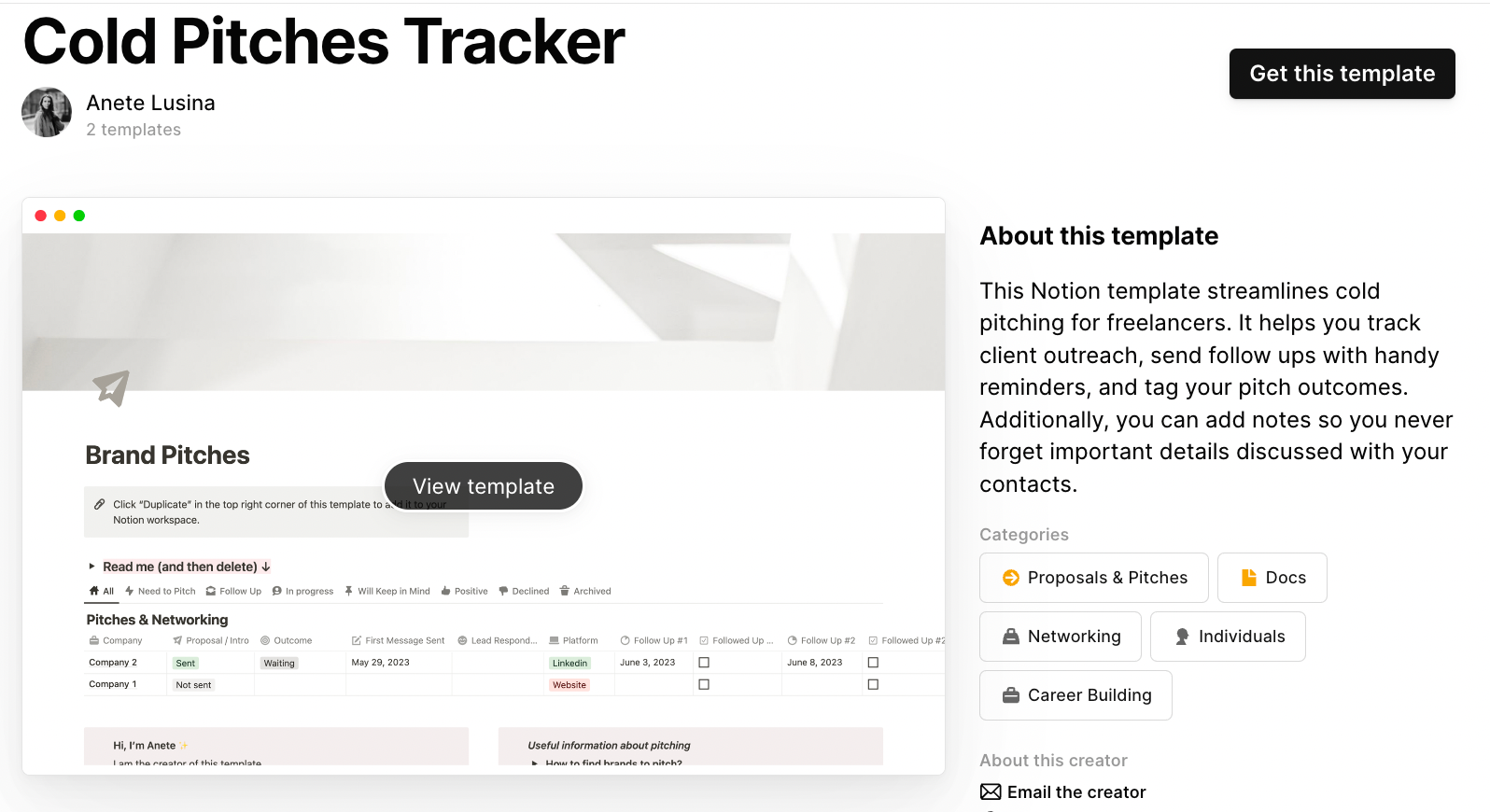
Example: Anete Lusina has created a cold pitch tracker for freelance writers.
20. Fonts
Create fun text styles and unique fonts for your audience. Sites like 1000 Fonts and DaFonts have a bank of browsable fonts that people can download either for free or for a fee.

People can download free and paid-for fonts on DaFont.
21. Social media templates
Lots of people DIY their social media graphics which is harder than it looks. If you’ve got a good eye, you can create and sell templates for Instagram images, Stories, and Reels. Your audience can download the templates and fill them out with their own information.
22. Icon sets
Icons are stylised graphics that people can use on their websites, social media, and landing pages. They can either work as clickable buttons or simply be a decorative addition to a webpage. Sites like Iconmonstr and Iconfinder have libraries of icons users can browse and you can charge a fee for them to download yours.
23. Pre-made website templates
Not everyone is a dab hand with design and putting together a website is an arduous task. Sell pre-made website templates to people who want to DIY their websites without having to do the design work themselves.
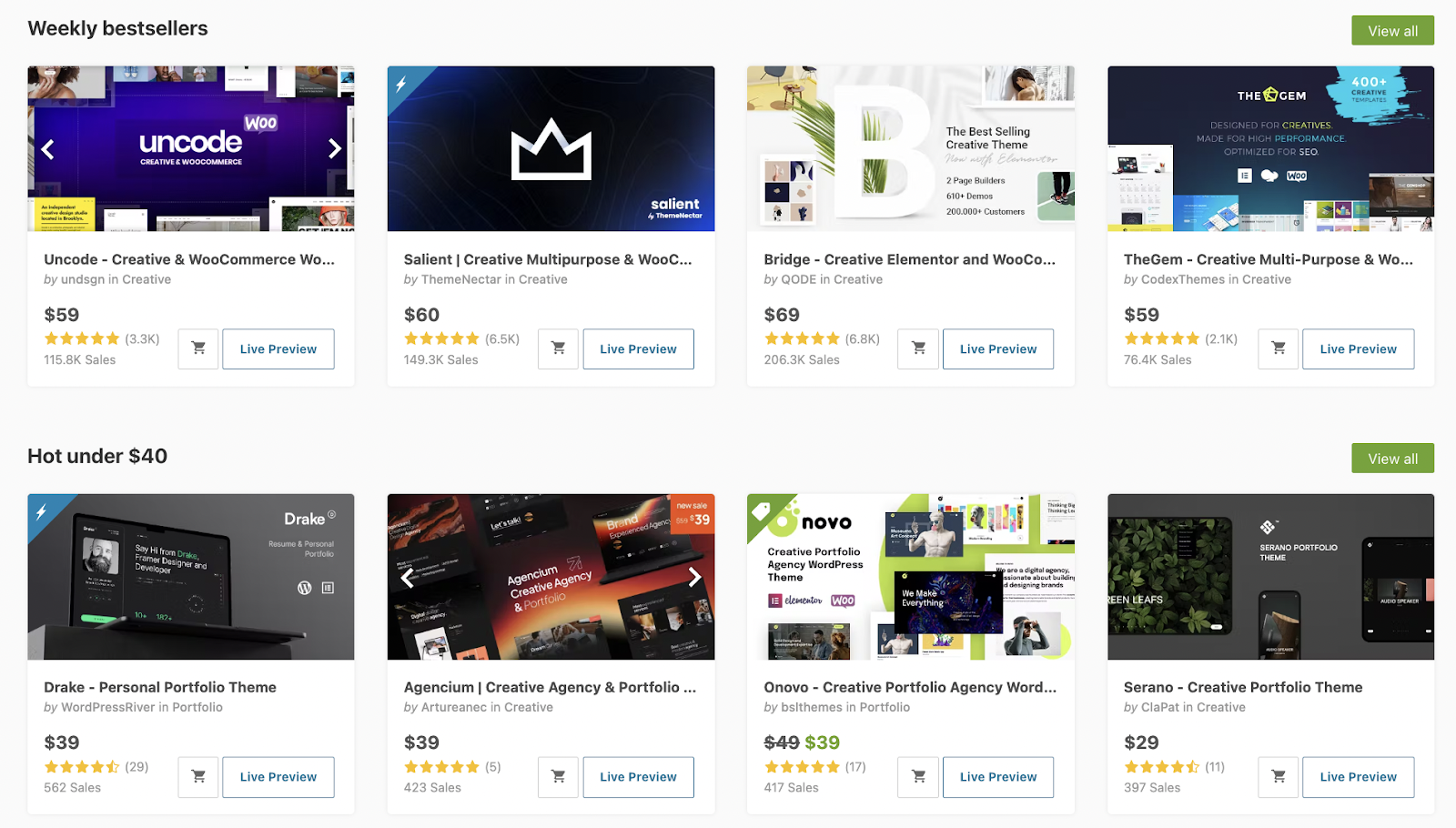
You can upload your templates to website libraries like ThemeForest and Creative Market and sell them for a one-off fee.
24. Apps
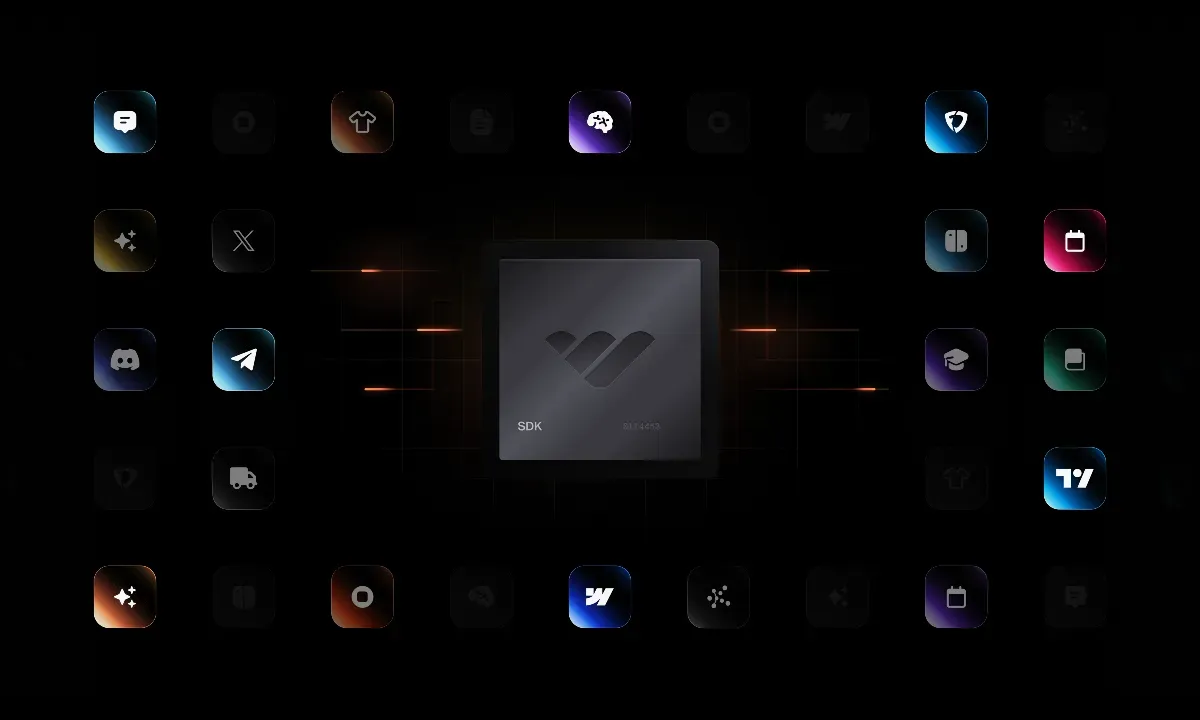
Everyone uses apps these days, whether it’s for organizing their schedule or listening to music. Create an app for a specific target audience and sell it in the App Store. You can add a paid plan to generate passive income or charge for in-app purchases.
Browse the Apple App Store or Google Play to get potential business ideas.
25. Video games
Similarly to apps, you can create a video game series for people to play on their phones or computers. You can monetize it via a subscription service, in-app purchases, or a one-off download fee.
26. WordPress plugins
WordPress plugins help users customize their websites and add features without needing to know complex coding languages. If you do have coding knowledge (or have someone to help), you can create plugins and sell them via the WordPress plugin marketplace or your own website.
27. Masterclasses
If you’ve run in-person workshops or masterclasses, a really easy way to make them work harder for you is to sell the recording online. Alternatively, you can create a fresh masterclass from scratch — once it’s recorded and uploaded, you can sell it over and over again.
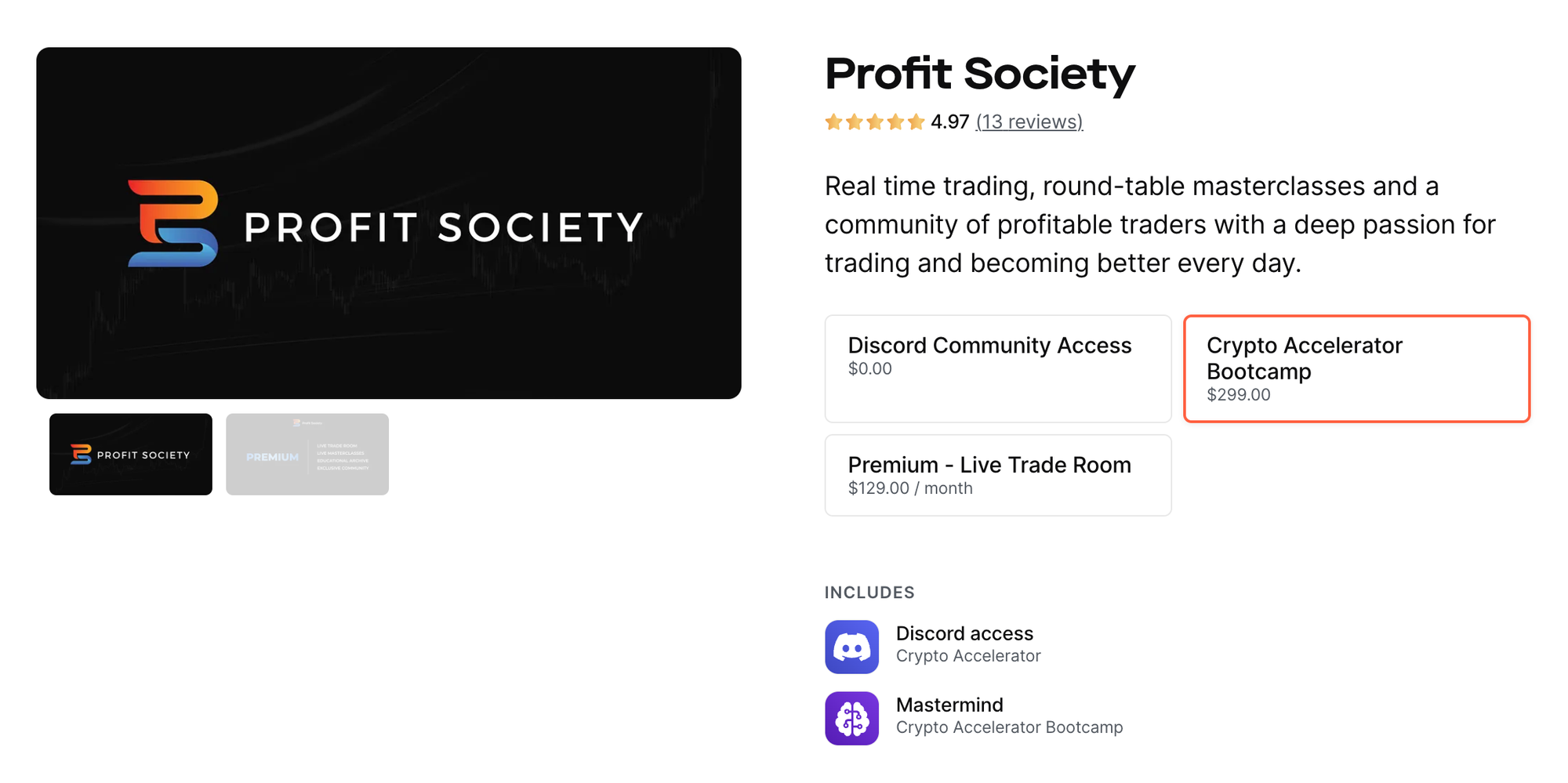
Platforms like Whop make it easy to create and seller a masterclass without needing to create a website or get your head around complex design aesthetics. You can browse the platform for inspiration, like this masterclass that teaches you how to become a better trader.
28. Email courses
Land directly in people’s inboxes with an email course spread out over days or weeks. This keeps you front of mind and you can use the emails to upsell other digital products. You can keep it simple here. Ask for a one-time fee in exchange for the course or offer a monthly plan where people pay a rolling fee for fresh course content each month.
29. Photoshop Brushes
Photoshop brushes help users create unique designs and add their own mark to the photo editing process. Create downloadable brushes that people can add to Photoshop and charge a one-off fee or tiered package prices for multiple brushes at once.
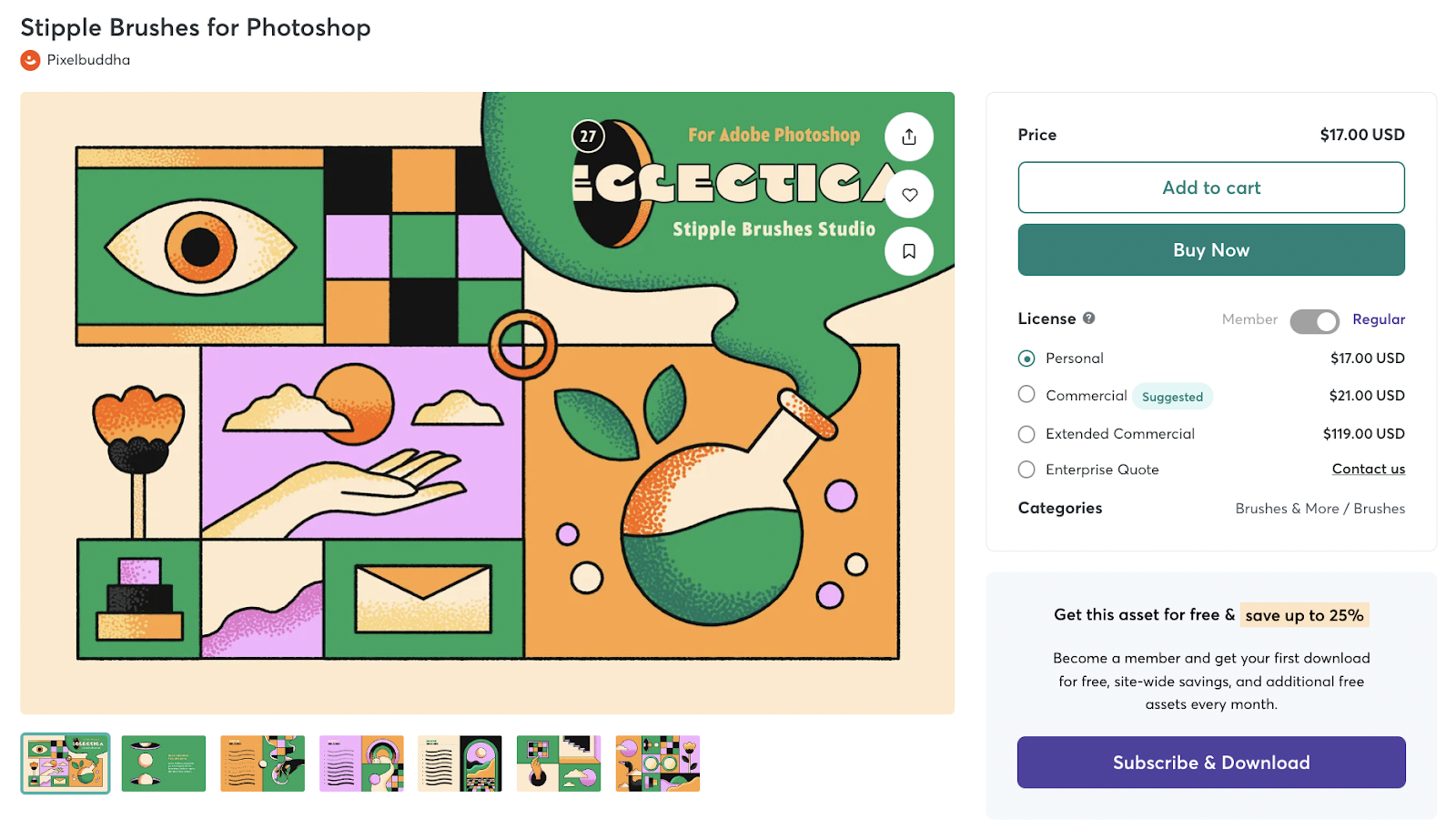
Example: PixelBuddha sells unique Photoshop brushes and bundles on Creative Market at different price points. Customers are charged $17 for personal use and $21 for commercial use.
30. Printable colouring sheets
Turn your artwork and patterns into coloring sheets for adults or children. You can charge a one-off fee for an instant printable download, or you can turn it into a subscription service that delivers fresh coloring sheets every month.
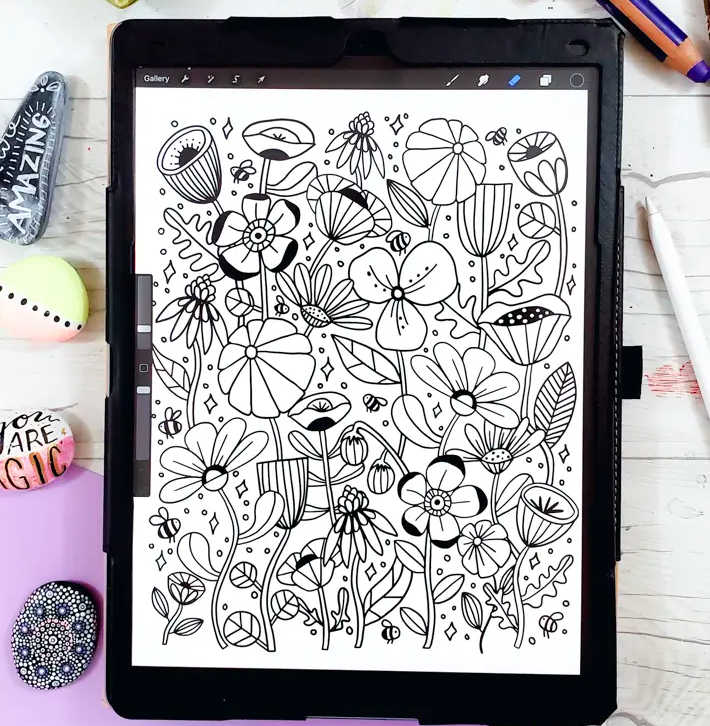
Example: Fox + Hazel has a range of printable coloring sheets as well as wall art and digital wallpapers.
31. Audiobooks
If you’d rather talk about your knowledge than write about it, turn your hand to creating audiobooks. You can write a short story (for kids or adults) and record yourself reading it to sell to customers. This can work particularly well for children’s books or relaxing content that can be consumed before bedtime.
32. Printable games
Keep kids and parents happy by creating printable paper games for the whole family. We’re talking about things like crosswords, word searches, or activity books. Again, you can charge a one-off fee per game or you can create a subscription where customers can download new games each month.
33. Songs and licensed music
If you’re a keen lyricist or songwriter and want to get paid for your creativity, consider selling your songs online. When you license your tracks, people pay a fee to use them in films, videos, and social media, giving you passive income every time someone chooses your song (plus, it gives your music more exposure… who knows, you might catch the attention of a label).
34. Content libraries
It can be disheartening to create a piece of content and watch it gather dust. Instead of leaving your videos, blog posts, and guides to decay online, combine them in a content library (often known as a content vault). People can then pay a one-off fee (or a monthly subscription) to access the content.
35. Augmented reality filters or overlays
If you’re tech-minded, try your hand at creating augmented reality filters or overlays. Filters can be used on social media (the Snapchat heyday might have passed, but other channels still offer users the chance to augment their surroundings). Alternatively, augmented reality overlays can help consumers envision what a new sofa might look like in their living room or how a summer dress looks on them.
36. Virtual reality experiences or environments
Sometimes people just want to escape—and you can help them with a virtual reality experience. Creating VR “scenes” or experiences can differentiate you from the regular crowd of stock photo and video sellers because you’re offering something new and exciting.
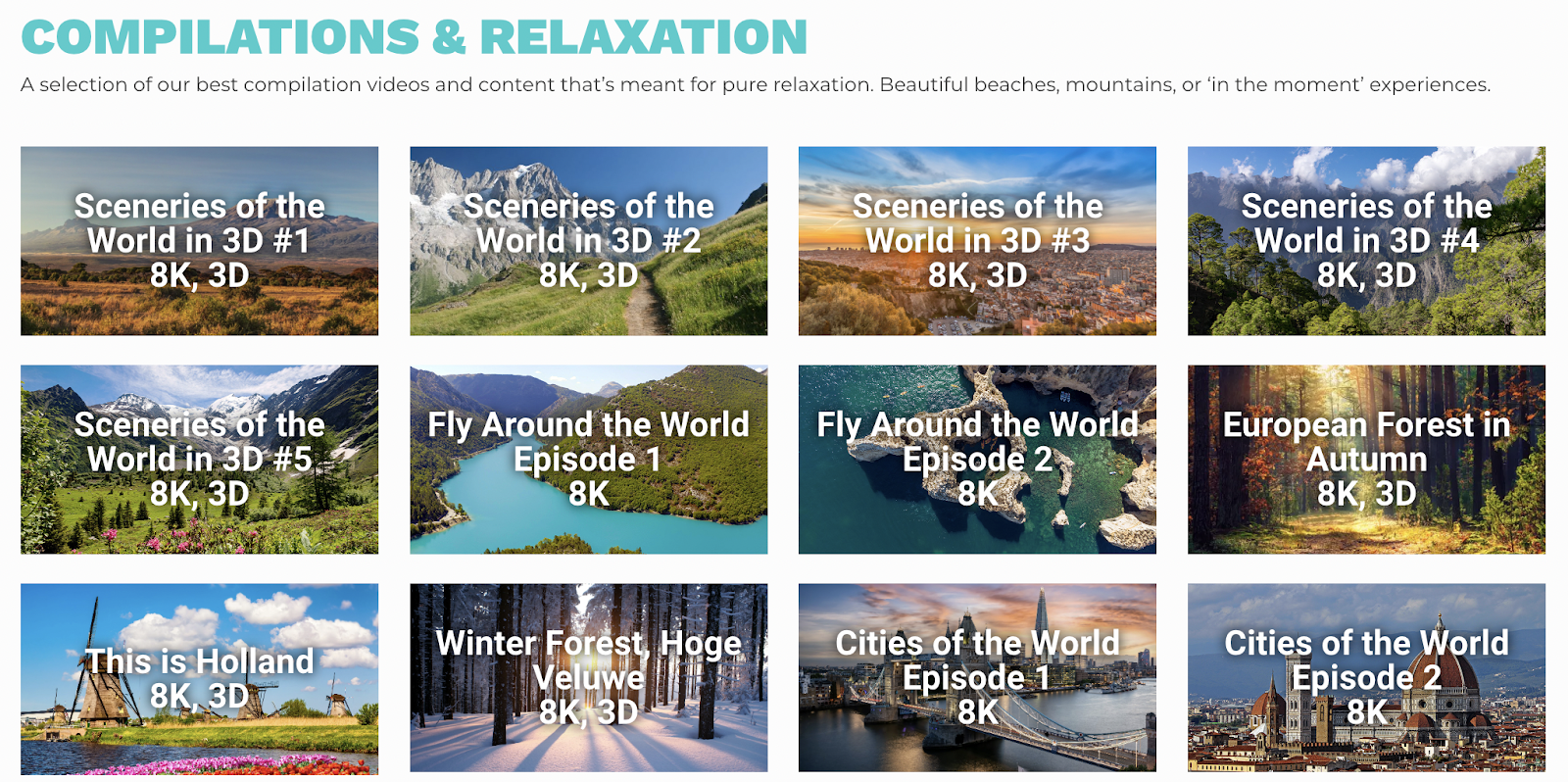
Example: Take VR Gorilla, for example. The company creates virtual reality environments and videos that people can license or buy. As well as offering one-off purchases, the brand sells monthly subscriptions so users can get a steady stream of fresh VR content.
37. Interactive fiction or choose-your-own-adventure stories
If you enjoy writing and love weaving a good plot, you can create and sell interactive fiction. It’s the perfect digital product for today’s Netflix-and-chill crowd who want to binge of stories but also feel like they’re in the driver’s seat. Plus, once you’ve built your story structure, you can sell it again and again with very little effort on your part.
38. Custom AI chatbots for specific niches
Many businesses are turning to AI-powered chatbots to deliver customer support when their human teams are offline. But it can be tricky to configure a chatbot from scratch so it sends the right answers and actually helps—not hinders—the shopping experience.
Try configuring AI chatbot templates for different niches. For example, you might create a chatbot perfect for companies selling vegan chocolate or one that helps finance companies send clients to the right resources.
39. Digital escape rooms or puzzle experiences
Why not create a virtual playground where people can flex their gray matter and feel like Sherlock Holmes? Escape rooms are a popular way for people to pass the time, enjoy an evening with friends, or provide a bonding experience for remote teams outside of awkward Zoom happy hours. Once you’ve built your digital brain teaser, you can sell it as many times as you like without restocking shelves.
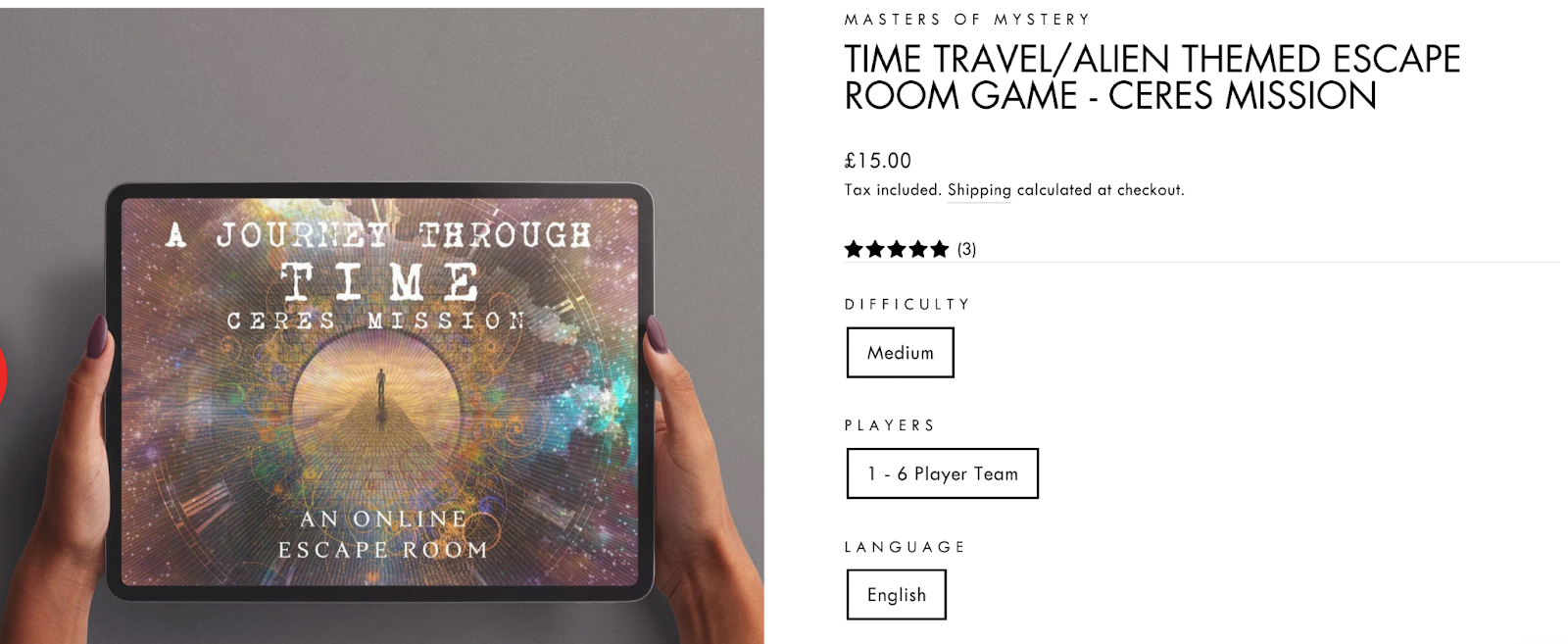
Example: Masters of Mystery sells a range of digital escape rooms that customers can download and use immediately.
40. Voice-over packages for various industries
Do you love the sound of your own voice (in a good way)? You can create voiceover packages for different industries and sell them over and over again. For example, you might record 10-15 minute audio recordings or meditations and mindfulness exercises or create voiceovers for corporate videos, e-learning modules, and apps.
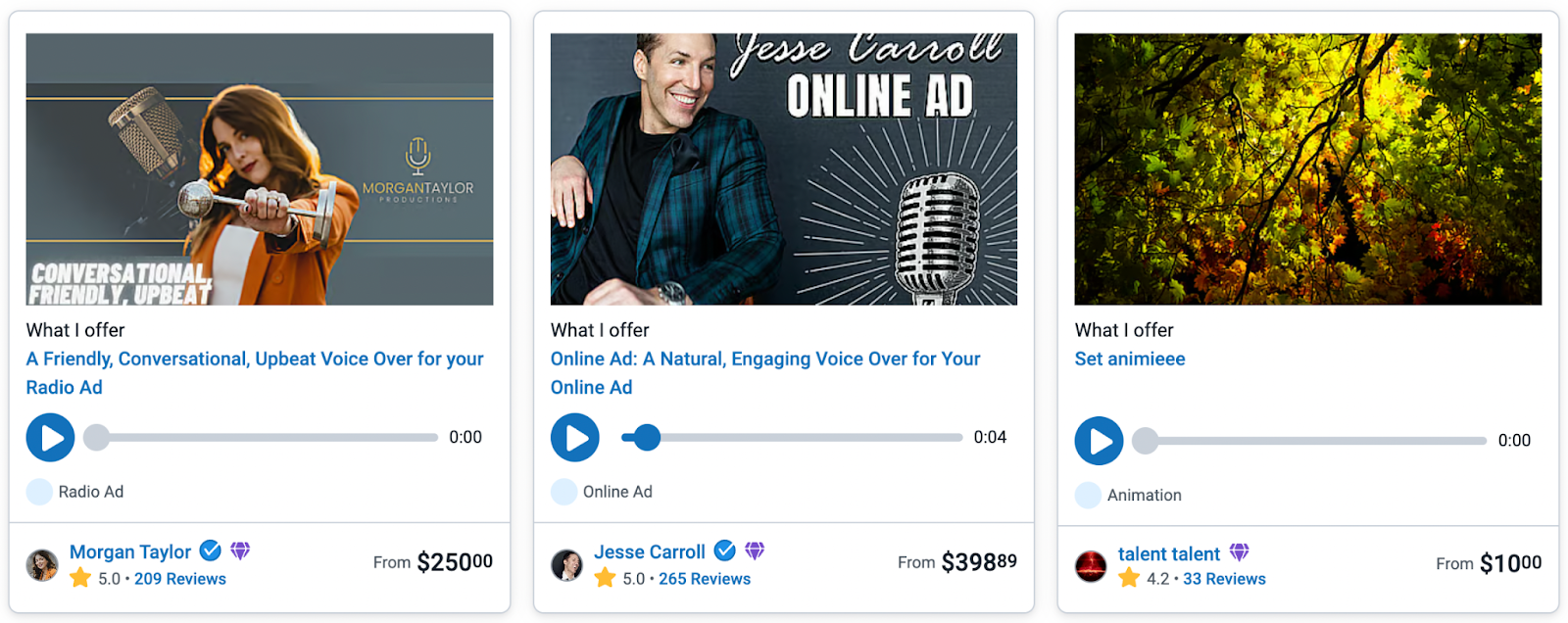
Example: Voices.com features a range of voiceover artists who sell packages for different situations, including ad voiceovers, game voiceovers, and voiceovers for phone recordings.
41. Presentation templates
Presentations are hard work on their own, and that’s before designing the accompanying slide deck. Create reusable templates that corporate folk can use to customize their presentations, whether they’re pitching for new work, presenting their latest findings, or hoping to land a new partnership. The idea is that people can download your templates and use them in their chosen presentation tool.
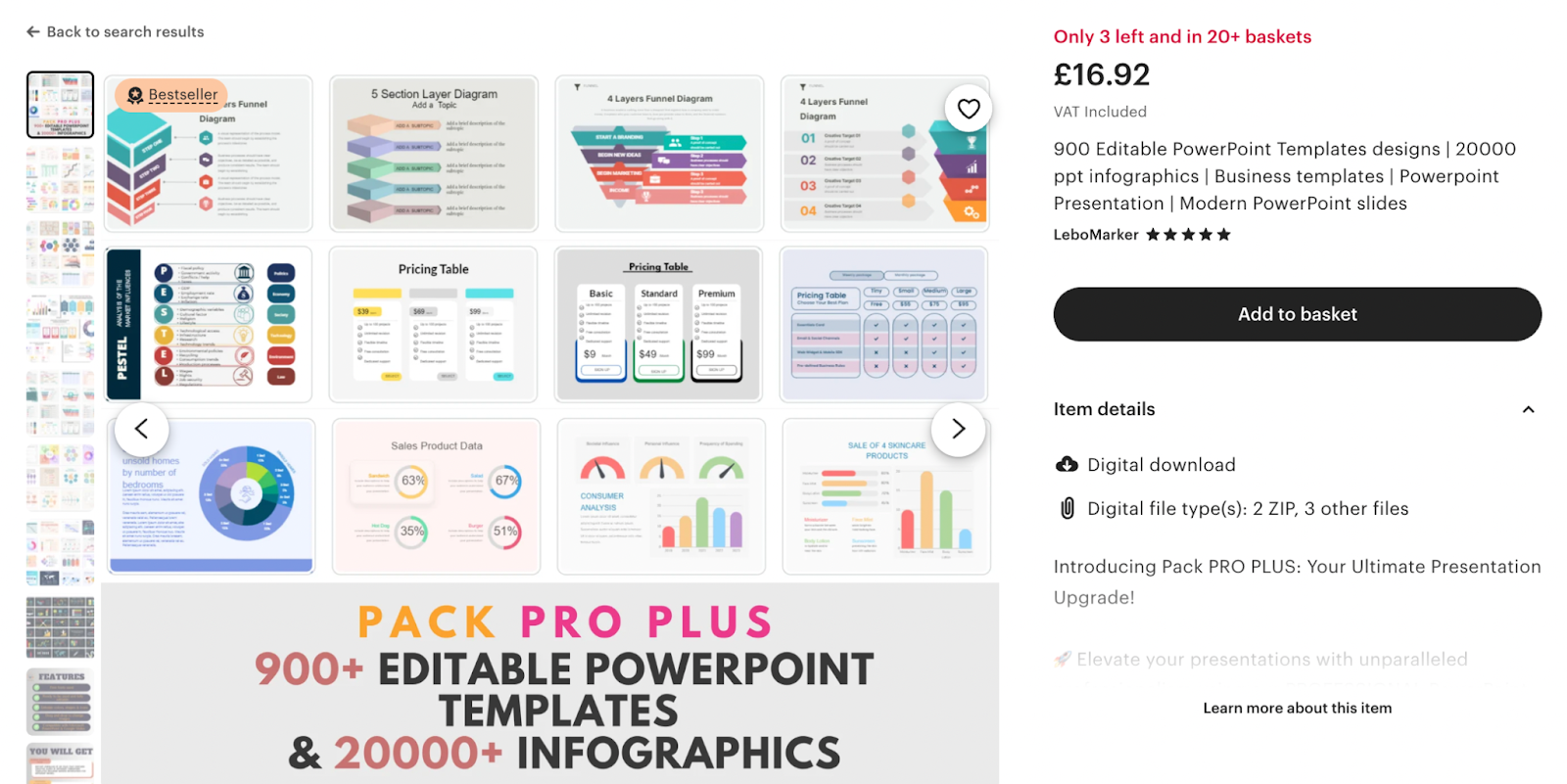
Example: LeboMarker sells 900+ templates and infographics for businesses to use in their next presentation.
42. Job boards
Pull together recent job openings and list them all in one central place. Make it easy for people to find opportunities that are a good fit with niche filters and the ability to save relevant openings. Once you’ve set up the tech behind the job board, you can use automation capabilities to make sure it pulls in fresh opportunities every day.
With Whop, you can create a job board in your very own whop.
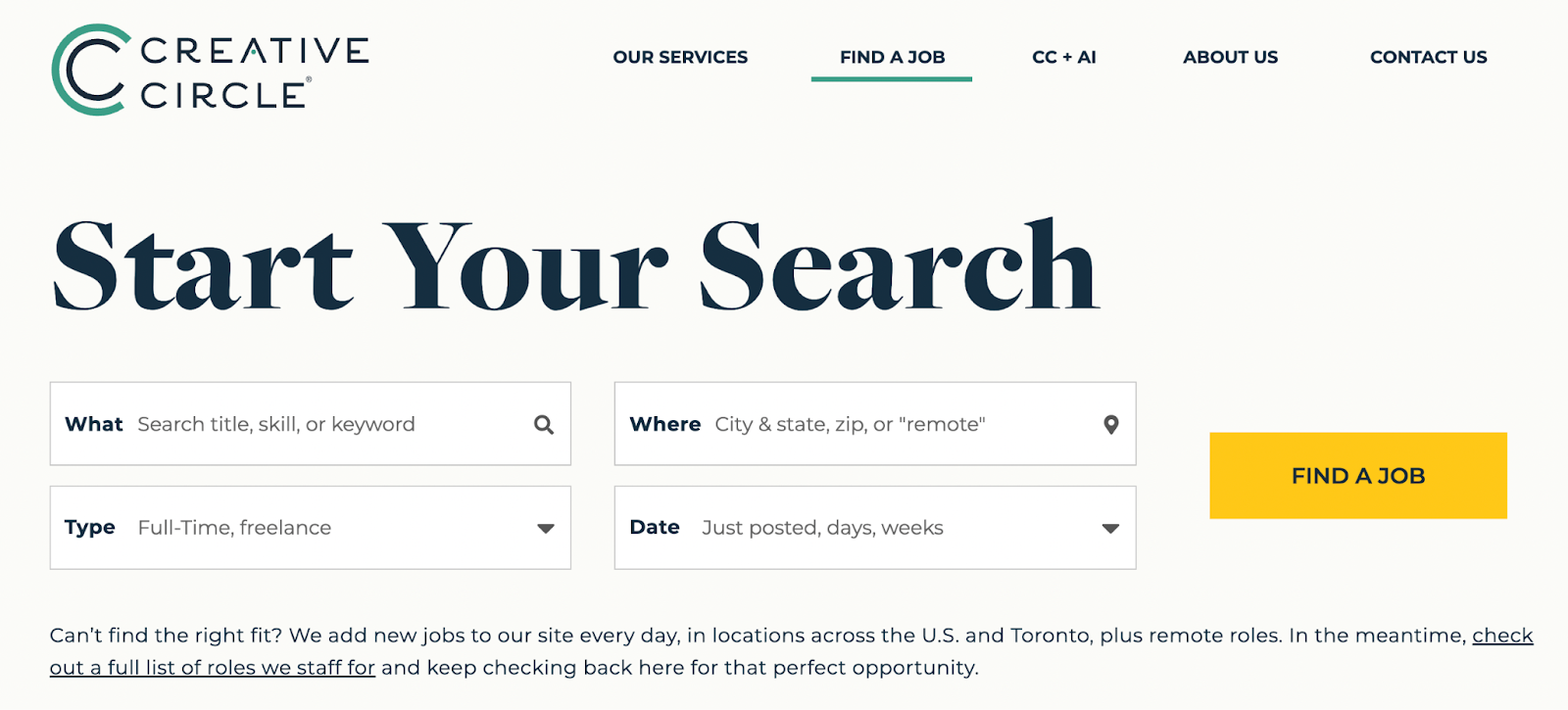
Example: Creative Circle specifically spotlights jobs in the creative sectors for copywriters, designers, and marketers.
43. Trip plans and itineraries
Everyone loves a good vacation, but not everyone enjoys the planning part. Make life easier for travel-loving folk by creating a series of trip plans and itineraries they can download, use, or customize to suit their needs. You can create different itineraries for different types of travelers. For example, a luxury itinerary, a budget itinerary, and a family itinerary for Costa Rica.
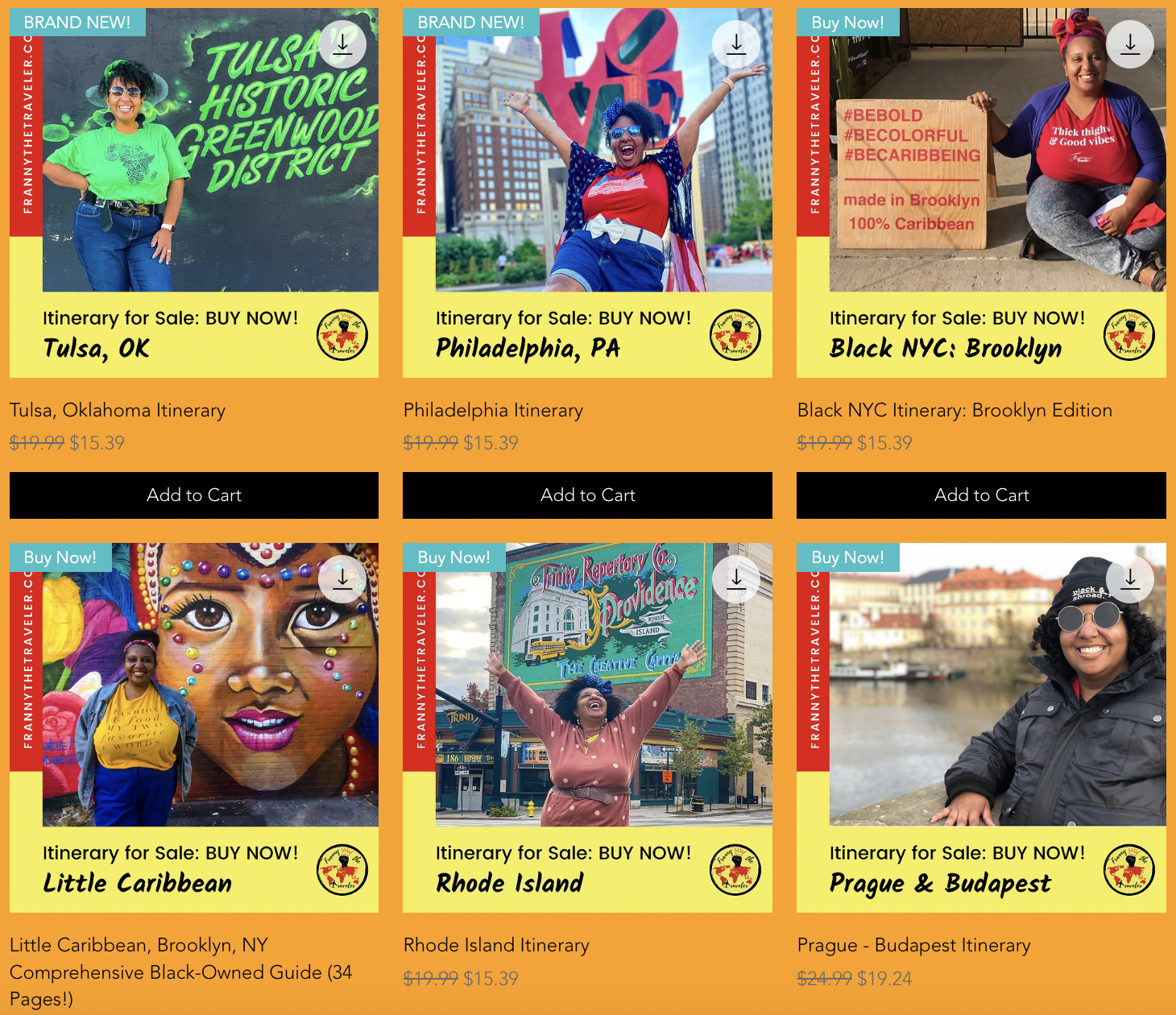
Example: Franny the Traveler sells a collection of itineraries for different cities around the world.
44. Recorded webinars
Webinars are a low-hanging fruit of digital products. Once you’ve run a live webinar, simply package up the recording and sell it as a separate product. Not only does this build trust and authority with your audience, but it means you can repurpose content and use it over and over again.
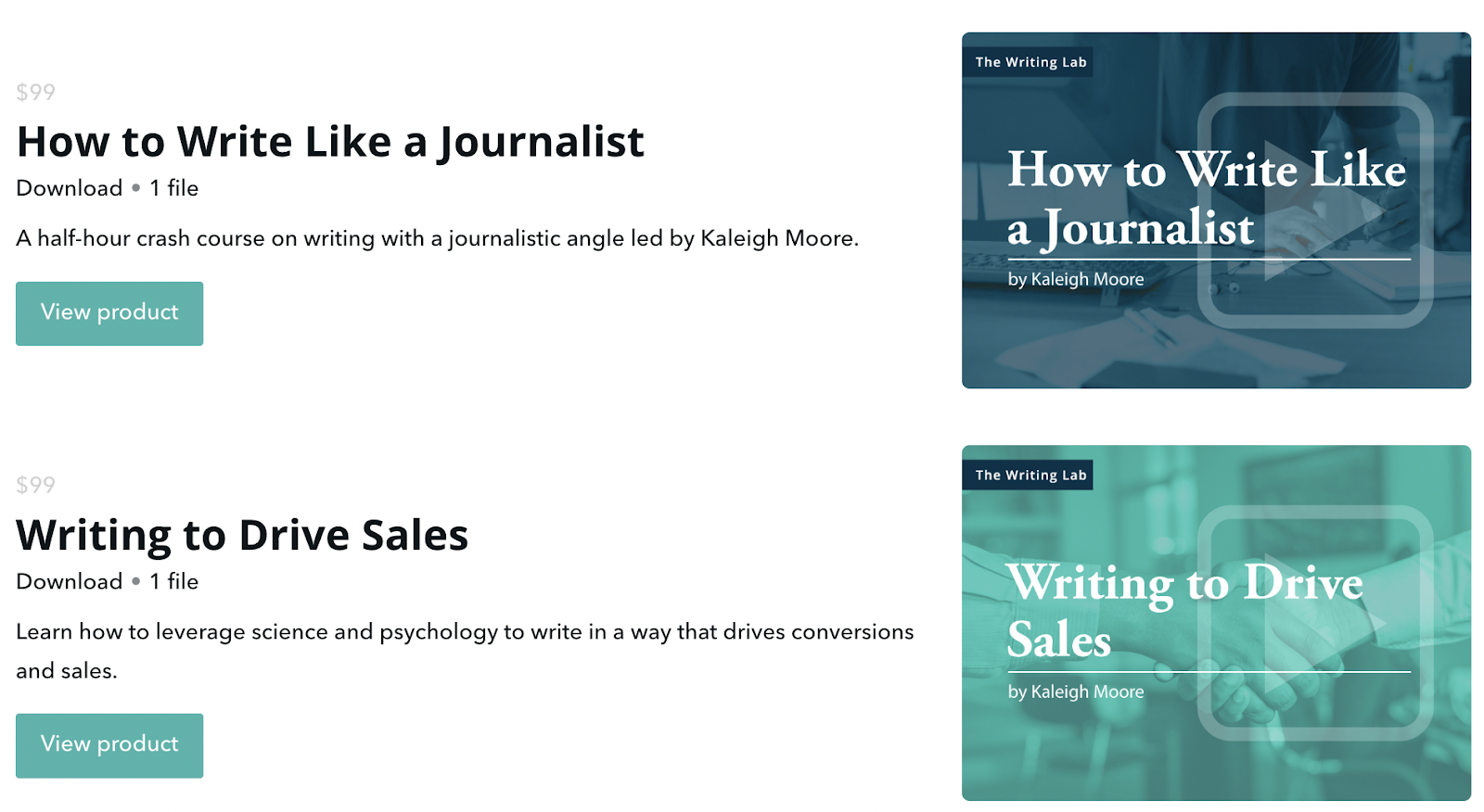
Example: Freelance writer Kayleigh Moore packages up previous live webinars and sells the recorded versions on her website.
45. Swipe files
Not everyone wants to spend hours trawling through Facebook’s ad library to find a relevant example for their next blog post. Ease this pain point by creating curated collections of high-performing ads, emails, and sales pages for marketers and copywriters to use. You’re basically selling inspiration on tap and, once you’ve put in the legwork to compile it, you can sell it to hundreds of thousands of marketers.
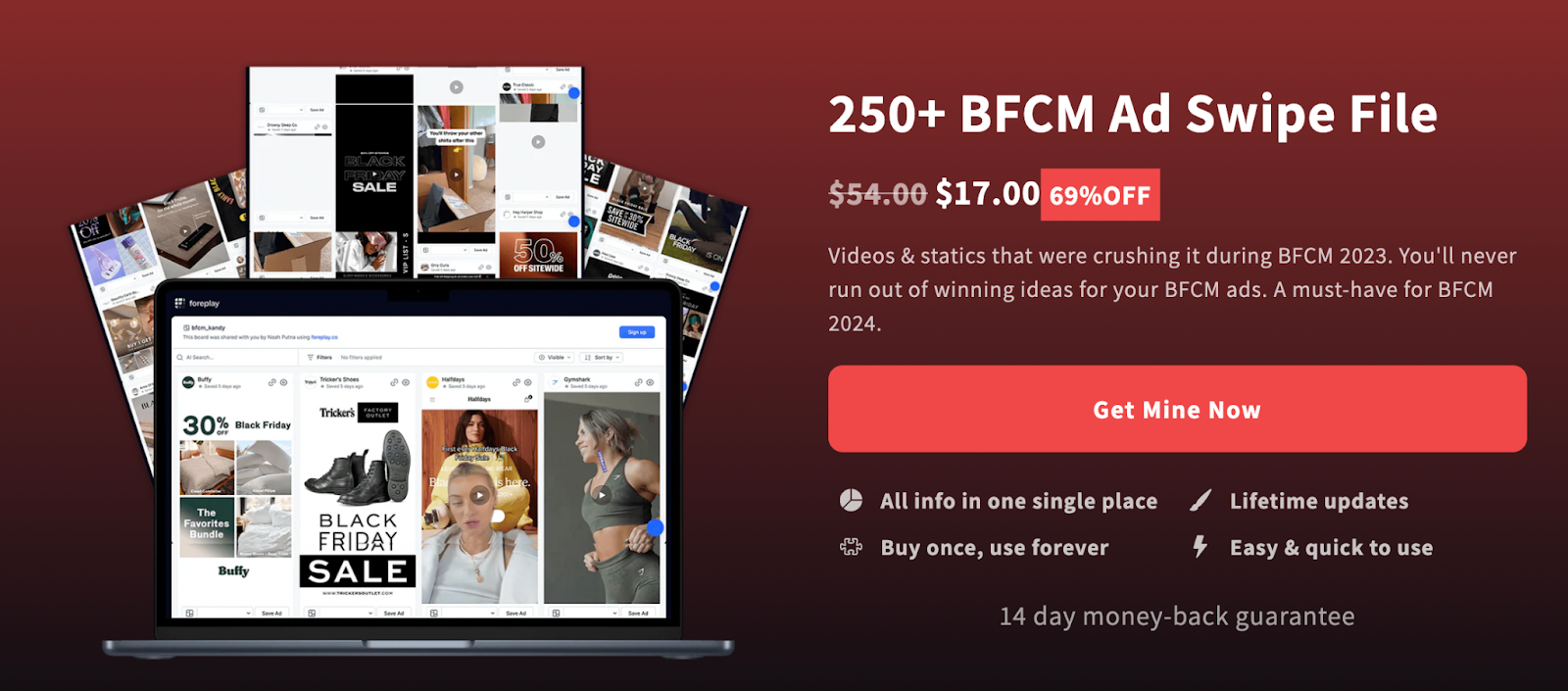
Example: Kandy for Scale sells a swipe file full of Black Friday Cyber Monday ads that brands can use for inspiration.
46. Email workflows
Email is still an integral part of business and is often the easiest way to turn leads into paying customers—but only if it’s done right. By creating and selling pre-built email workflows, you’re offering businesses a shortcut to better engagement and higher conversions. You can create workflows for multiple scenarios, including abandoned cart sequences, welcome sequences, and post-purchase sequences.
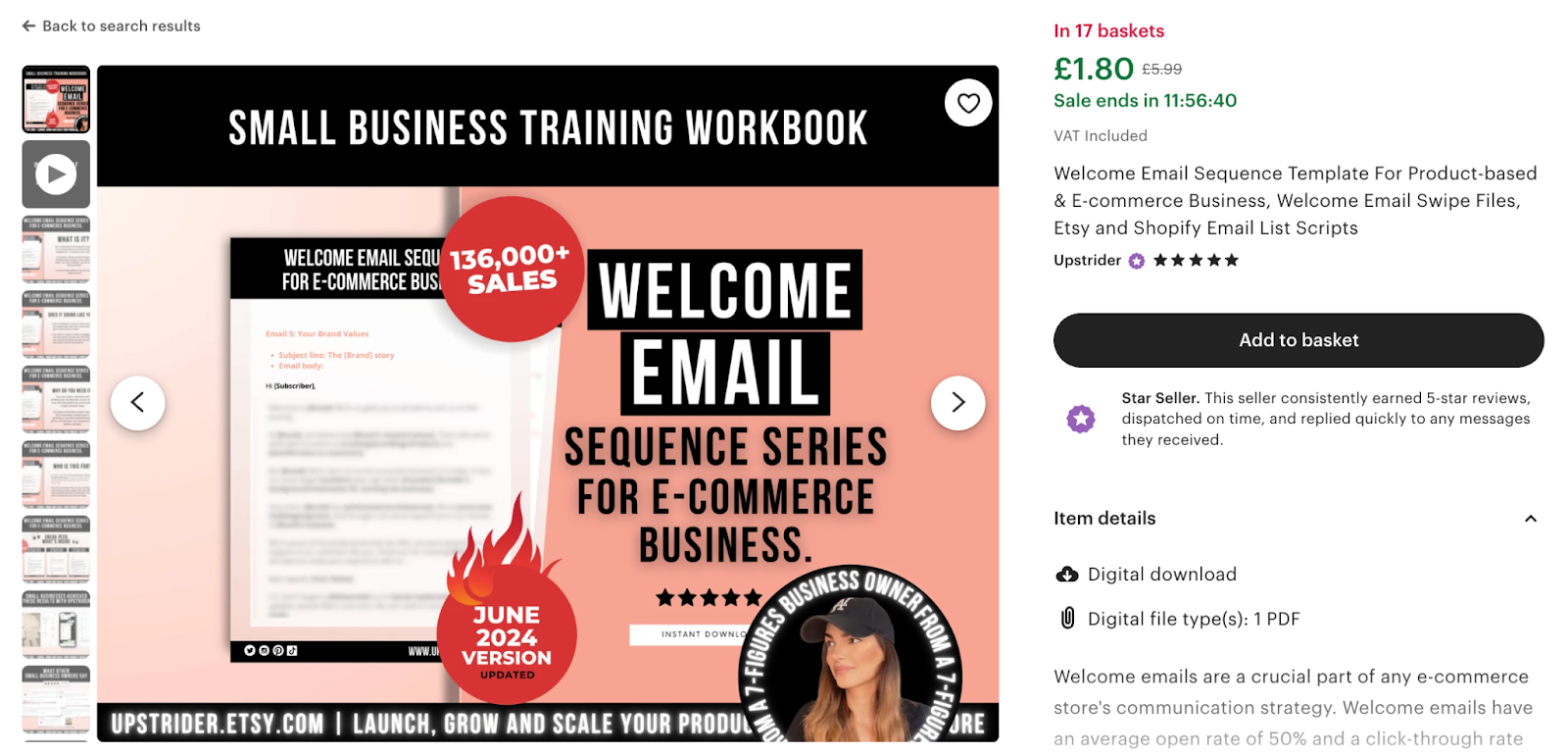
Example: Ann-Maud of Upstrider sells a whole range of email workflow templates, including this one that gives ecommerce brands a welcome series flow to customize.
47. Branding kits
Every business needs a brand, but not every business has the resources or creative know-how to build their own or hire someone to do it for them. If you’ve got a keen eye for design, you can create comprehensive bundles that include logo templates, color palette ideas, and font inspiration.
You’re essentially offering a business-in-a-box solution that saves entrepreneurs from the dreaded “designer’s block” and the expense of hiring a full-time creative team. With the right customization options, your branding kit can cater to various industries which expands your potential reach and customer base.
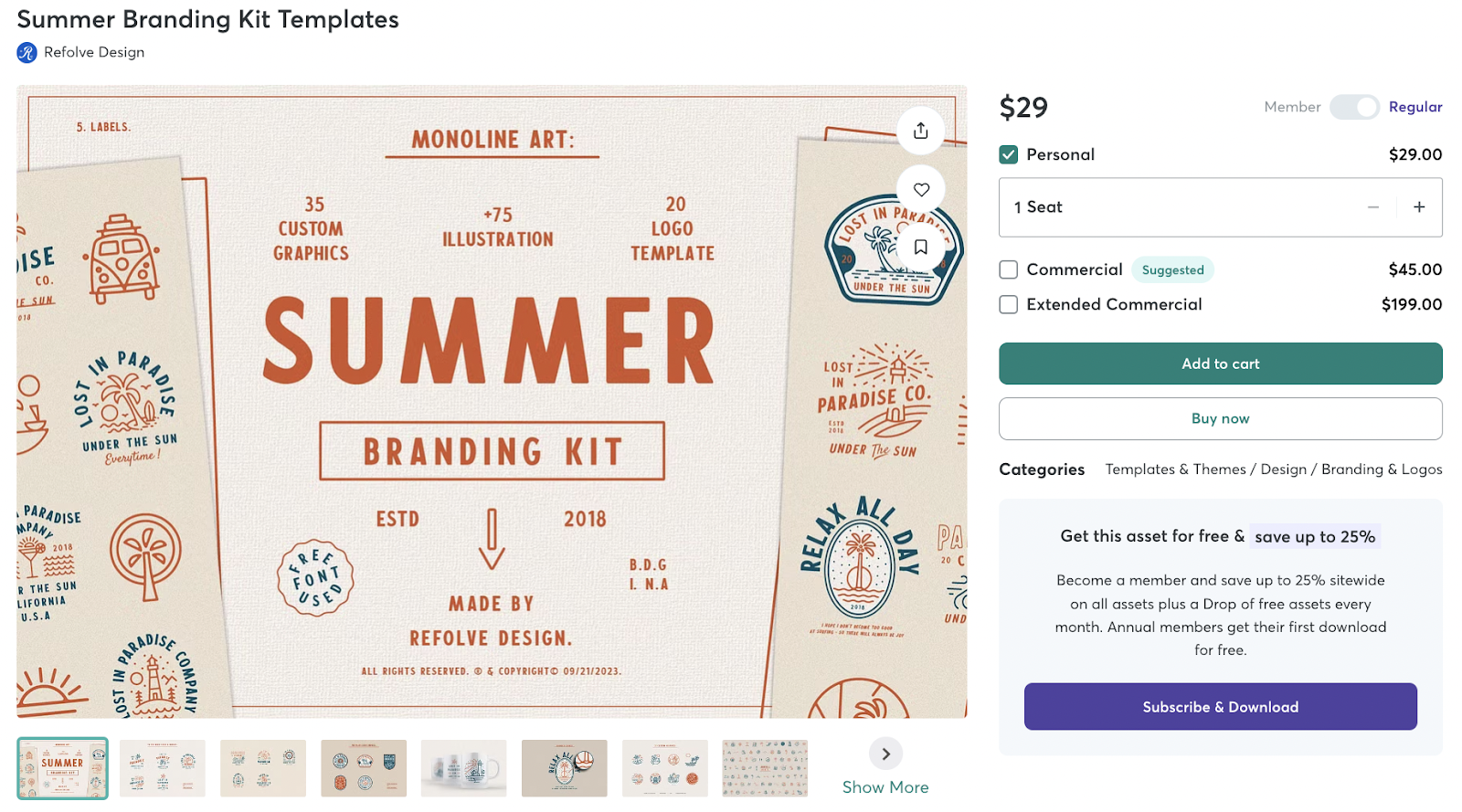
Example: Refolve offers this summer branding kit that comes with pre-made logos and icons.
48. Online assessment tools and calculators
Turn your expertise into engaging, interactive experiences with custom online assessment tools and calculators. You might gauge knowledge with a pre-made quiz, offer personalized health recommendations, or simplify complex financial calculations. Once you’ve created your assessment tool or calculator, you can either charge people to access it (or, better yet, charge them to see the results) or license it out to other businesses.
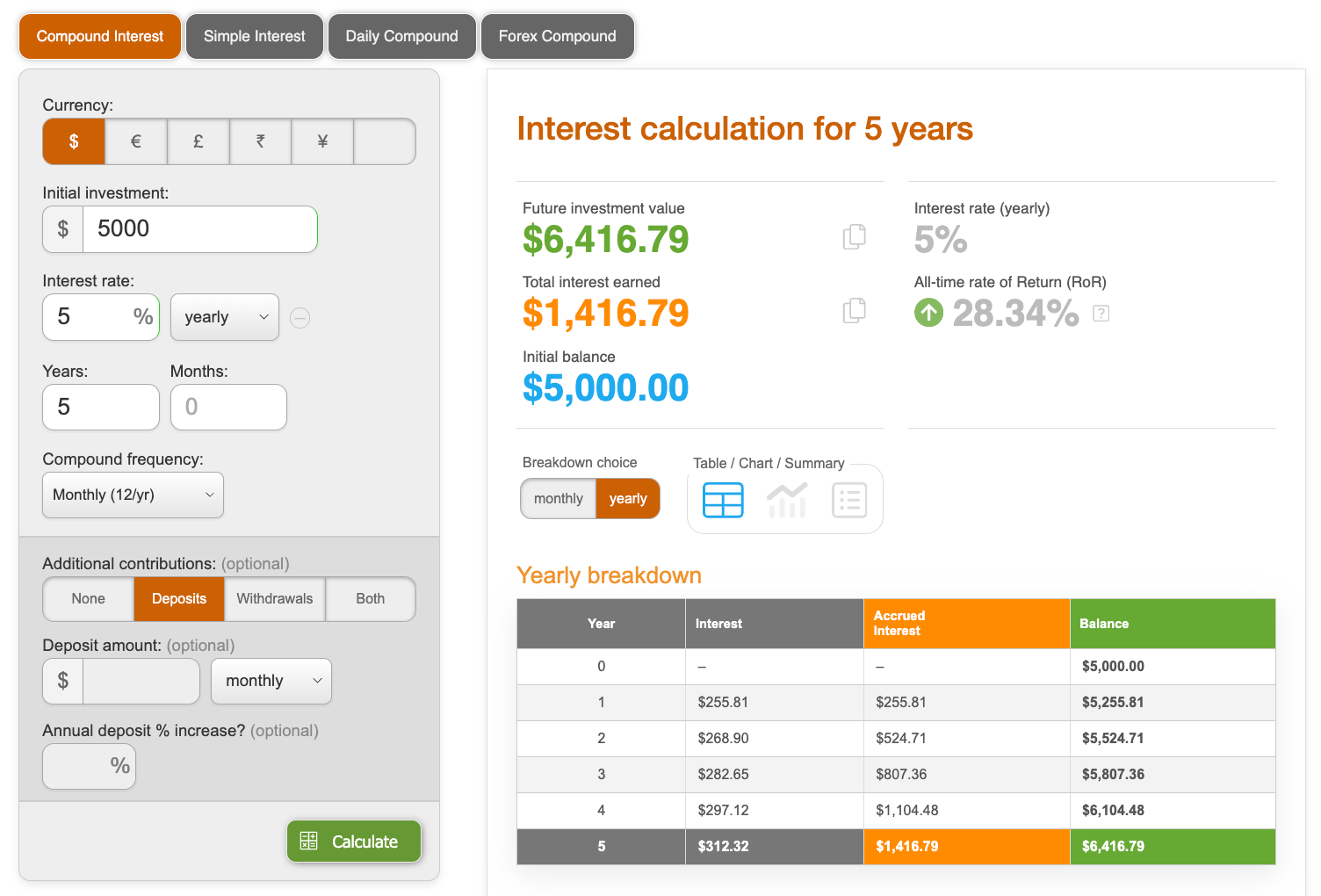
Example: this calculator shows users their compound interest over time.
49. Knitting and sewing patterns
If you’re good with a needle (or two), turn your skill into sales by creating knitting and sewing patterns. Package up your favorite jumper, hats, or animal stuffies into an easy-to-use pattern that other keen knitters can buy. Sell your patterns on your own website or use a platform like Whop to promote your products and fulfill orders.

Example: Laughing Hens has a range of patterns for different items that customers can download and use immediately.
50. Animated GIF packs for social media
GIFs are the language of Gen Z. By creating custom animated GIF packs that can be used on Instagram, TikTok, and other social media platforms, you’re opening yourself up to sales from one of the fastest-growing demographics. Shareable, visually appealing content that resonates is really hot right now, so there’s definitely a market for this kind of digital product, whether your GIFs are for branding, marketing campaigns, or just for adding a fun touch to everyday interactions.
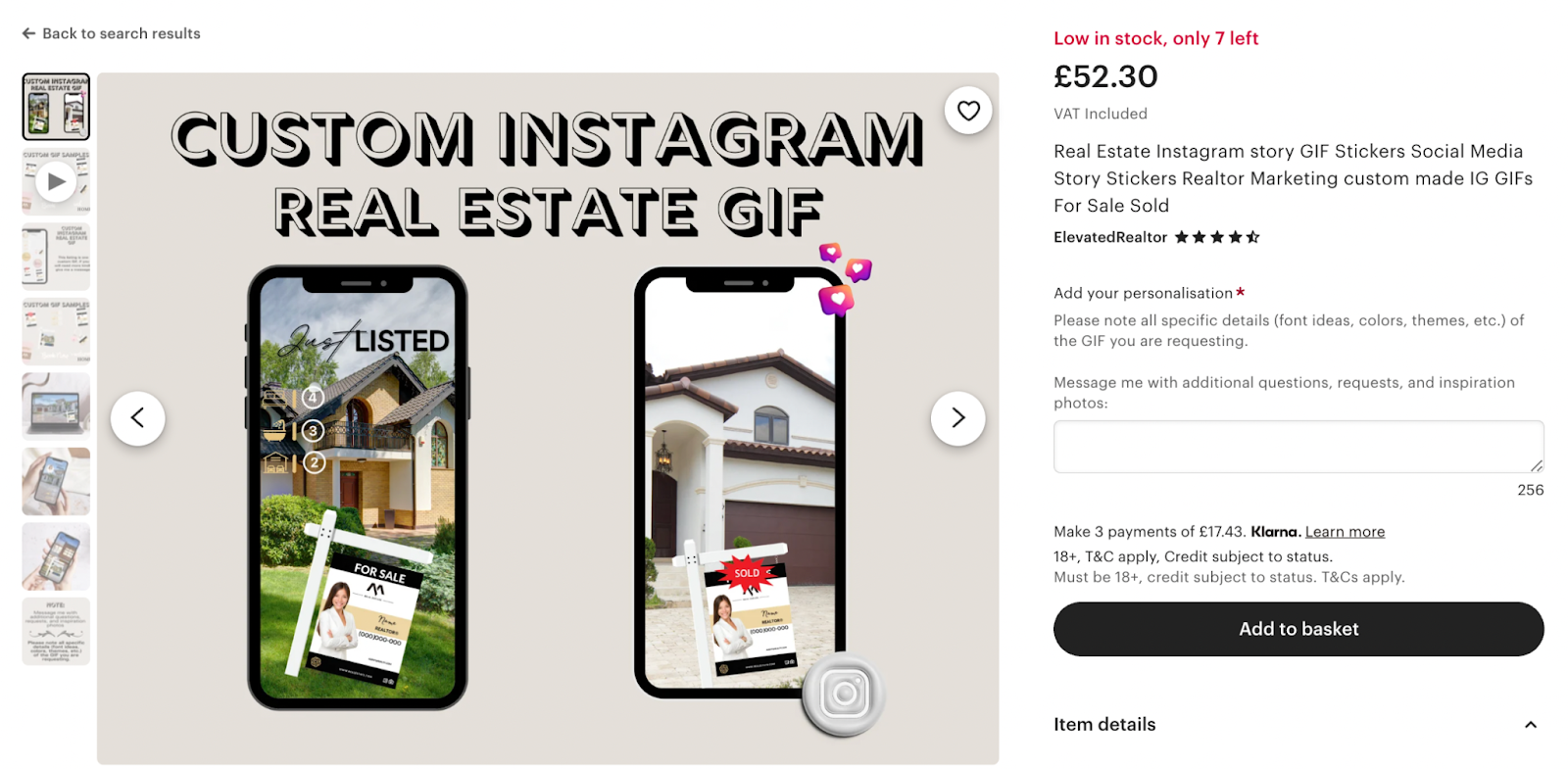
Example: Elevated Realtor sells real estate gifts for companies to use on social media.
51. Digital scrapbooking kits
Scrapbooking is enjoying a moment in the spotlight at the moment—especially digital scrapbooking. The accompanying kits offer a treasure trove of customizable elements, such as themed backgrounds, decorative embellishments, and stylish fonts, that bring personal projects to life. For creators, digital scrapbooking kits are a golden opportunity to cater to a passionate community on the hunt for unique and easily accessible design resources. They not only make crafting more convenient and mess-free but also open the door to endless creative possibilities.
By offering these kits, you can inspire creativity, nurture a dedicated customer base, and tap into a thriving market of digital crafters who are always looking for new stuff for their next scrapbooking project.
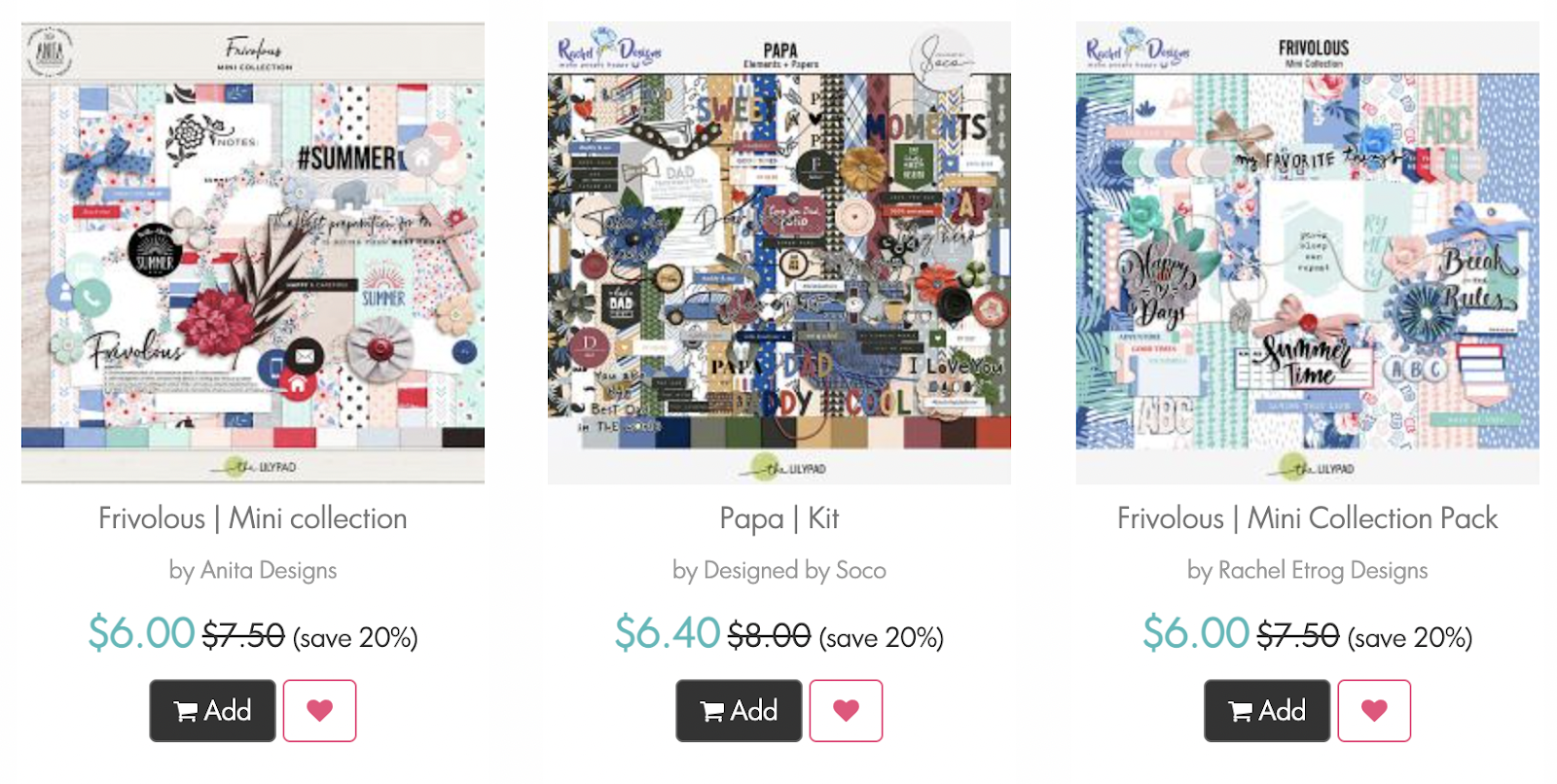
Example: The Lily Pad sells a collection of different scrapbooking kits, each of which use different color palettes and elements.
52. Productivity sound environments
Carefully curated soundscapes, like calming nature sounds and stimulating ambient music, are designed to create the perfect auditory backdrop for any task. Developing these sound environments gives you an “in” into the wellness and productivity market, where you can license your sound environments on different platforms and to different companies.

Example: Gravity Sound has a host of different sound environments for different occasions, whether it's the ambient sounds of camping or autumn forest sounds.
53. Virtual interior design mood boards
DIY home improvements are all the rage at the moment—but, just like designing a brand, not many people have the skills to do it justice. Help interior lovers out by creating interactive, customizable mood boards they can use to plan their dream homes. Either offer them as a download that they can fill out manually or make them integrate with specific design platforms.
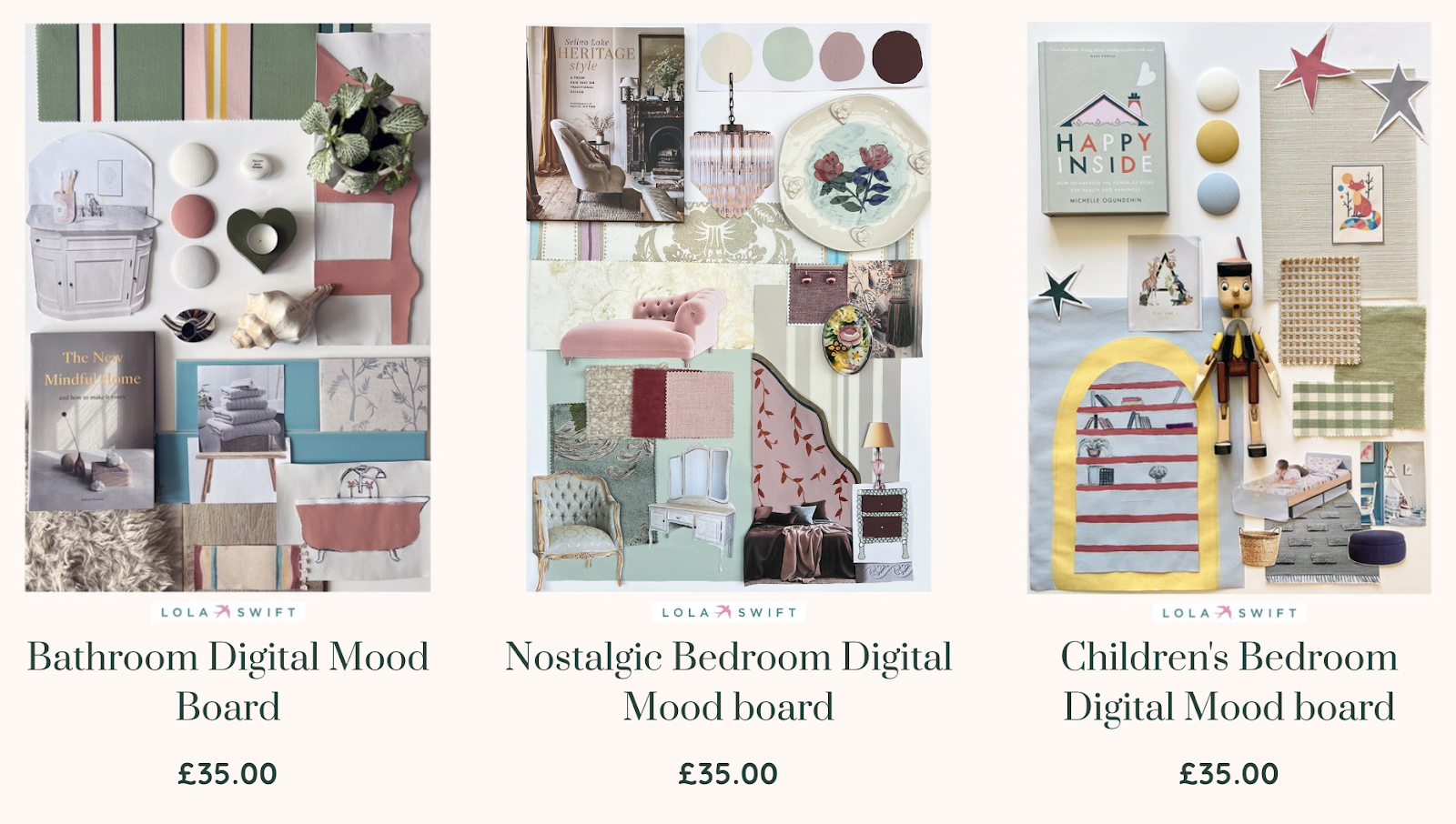
Example: Lola Swift sells a handful of premade digital mood boards for different rooms.
54. Digital sheet music or tablature for musicians
Can you read music? If you can, there’s an opportunity at your fingertips. Turn sheet music into downloadable files that musicians can store on their devices or print out to play live. You’ll need some musical skills here, especially if you’re transforming sheet music from one instrument to another. If you’re feeling really bold, you can also create your own songs for people to download.
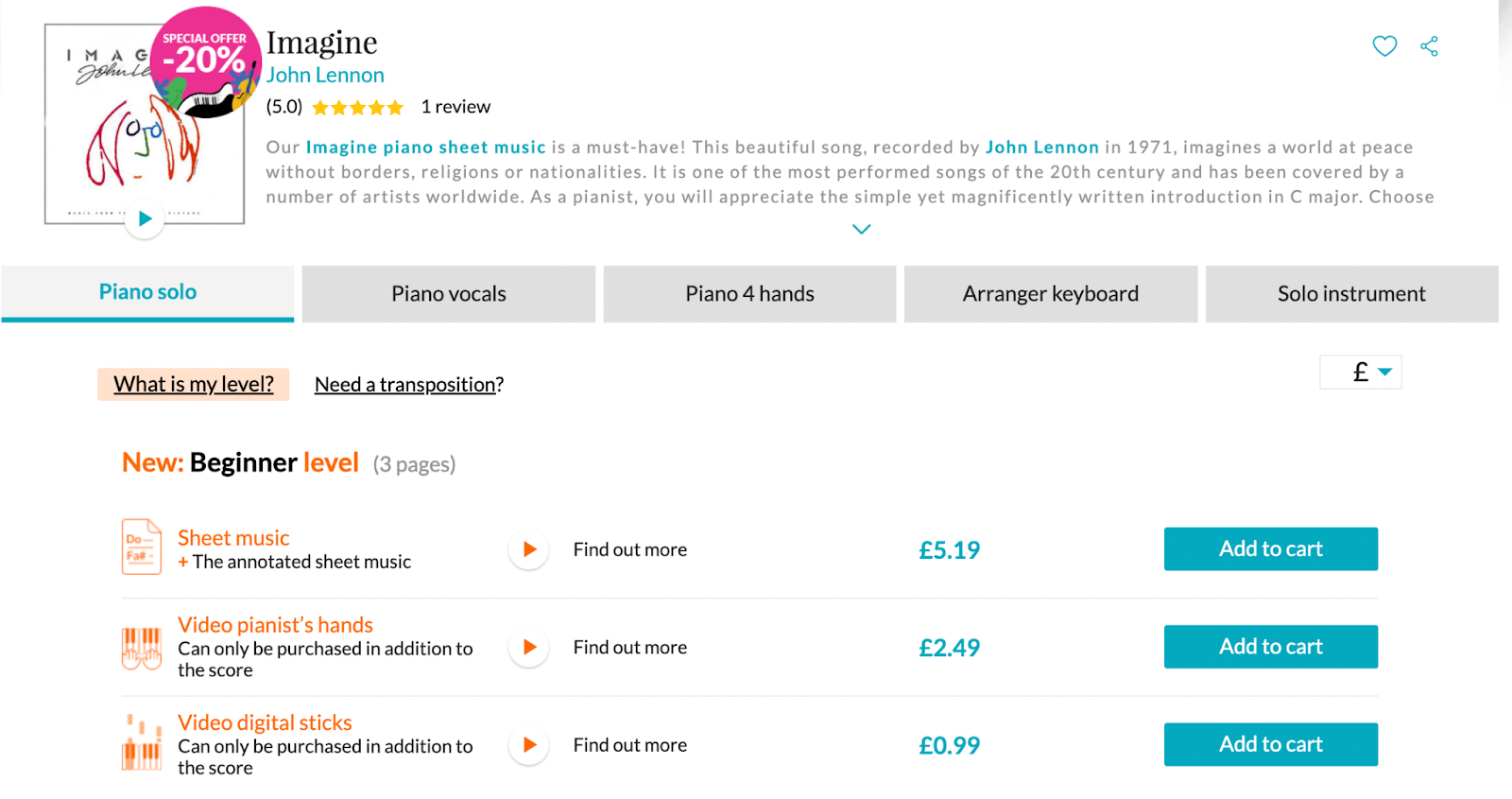
Example: Noviscore sells sheet music, but it also offers add-ons for customers who want accompanying tutorials and videos.
55. Podcast intro and outro music packs
Podcasts are huge right now, with many consumers citing them as their favorite way to consume content on the go. Developing music packs for podcast hosts to use in their intros and outros is a lucrative opportunity to cater to this rapidly growing community. By supplying high-quality, royalty-free music tailored to a range of different podcast niches, you can help podcasters polish their production and establish your brand as a go-to source for premium audio content.
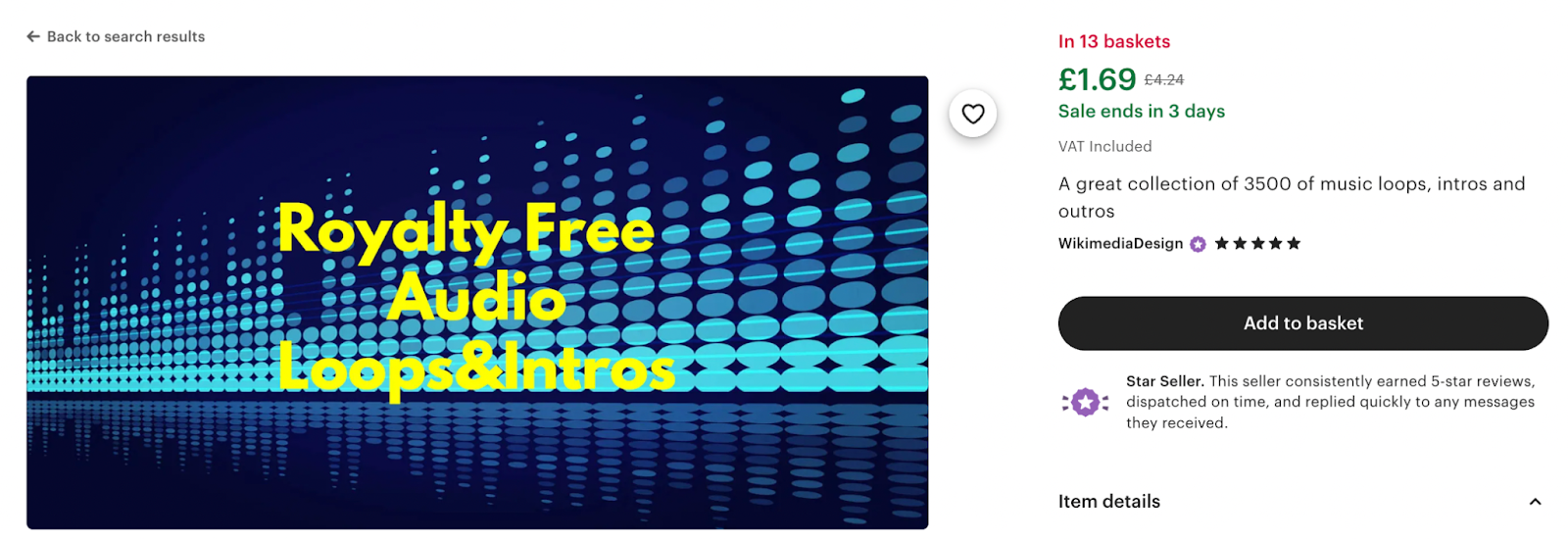
Example: Alex of Wikimedia Design sells a batch of podcast intros and outros.
56. Custom emoji or sticker packs for messaging apps
Transform everyday conversations into vibrant expressions with custom emojis and sticker packs. These bespoke packs can help users or companies inject personality and creativity into chats. You can create a series of packs for different niches or different types of users that you can sell over and over again.
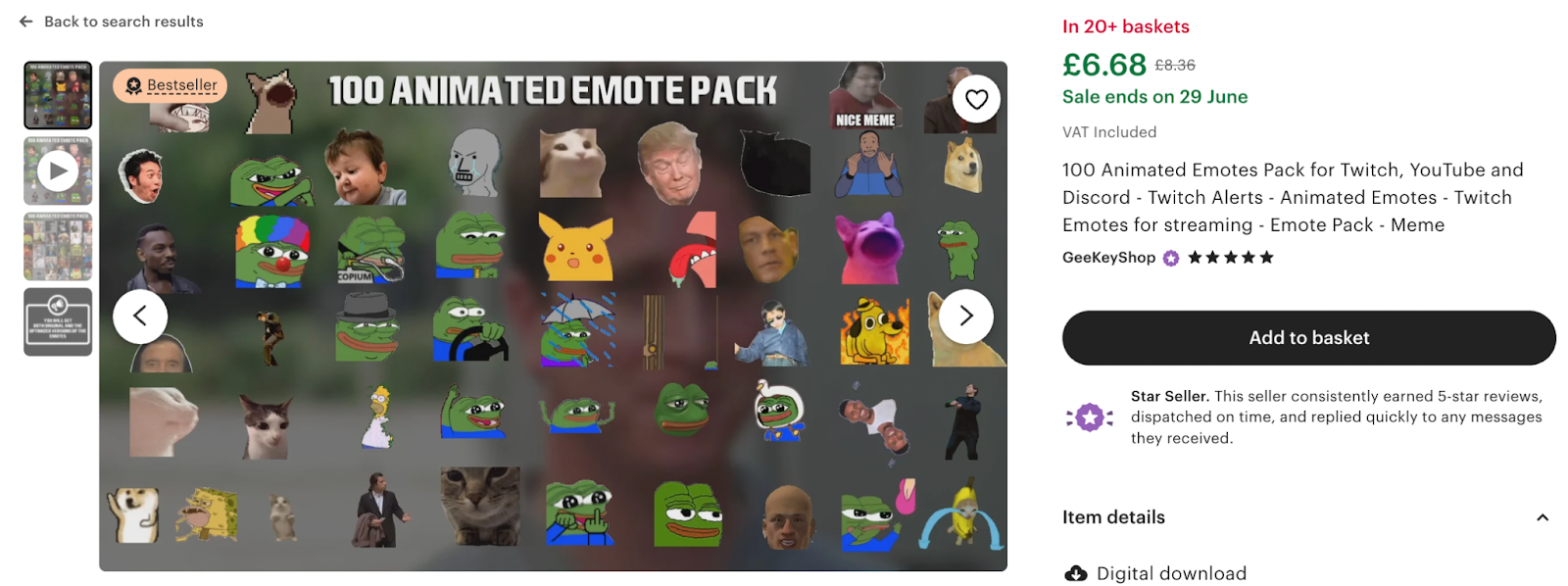
Example: Gee Key Shop sells animated emotes and emoji packs for people to use on Twitch and other messaging platforms.
57. Customizable board games for print-and-play
Who doesn’t love a good board game? If you’re a keen gamer (in the real-world sense), turn your talents to designing a series of board games that your customers can download and play. You can create games for all sorts of tastes and interests, from whodunnit games to card games and everything in between. Once you’ve designed your suite of games, you can sell them on your website, marketplaces like Etsy, and via your Whop hub.
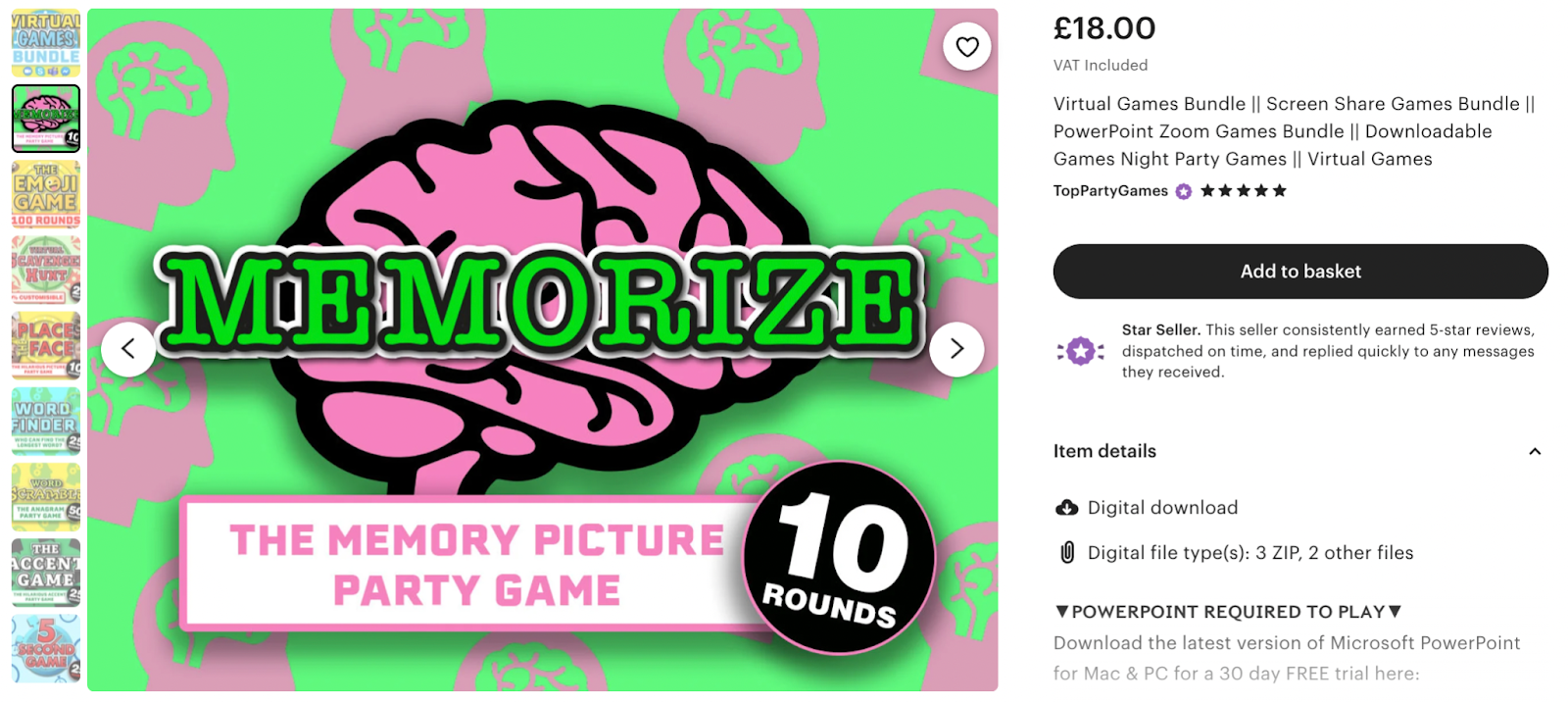
Example: Top Party Games sells a bundle of downloadable games that are fun for all the family.
58. Activity packs
Activity packs can work in multiple scenarios, from professional team-building exercises to digital bundles that parents can use to keep their kids occupied. The best part is, you can keep adding to your activity pack library to generate more sales.
Here are some ideas:
- Weekly STEM challenges for 8-12 year olds
- Mindfulness activities for college students
- Holiday-themed craft bundles
- Company team-building scavenger hunts
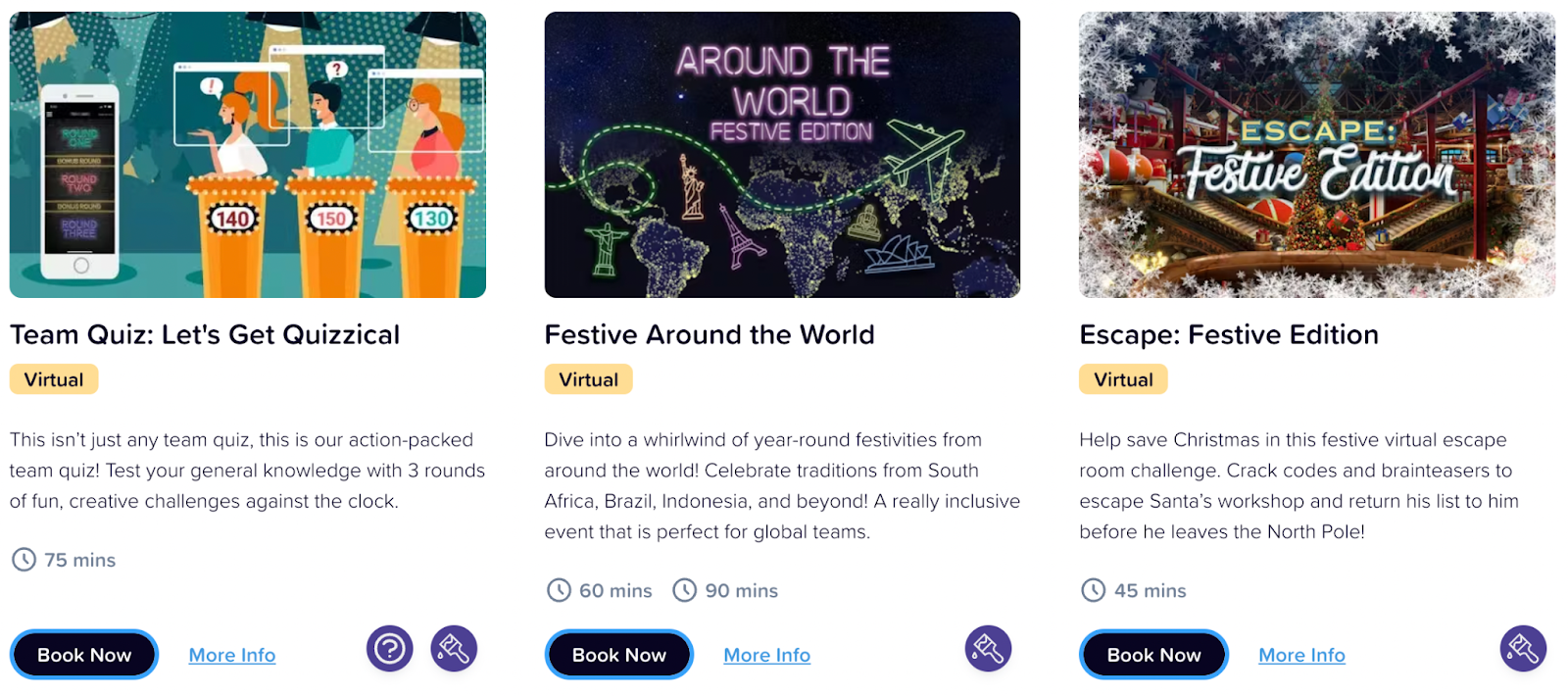
Example: Wild Goose has an entire library of online team-building activities.
59. Template libraries
Creatives and business owners need professional-looking materials but they don’t always have the time or skills to create them from scratch. Give them a hand by creating libraries of useful templates, like Instagram Story templates, email newsletter templates, or Canva templates. You can group together similar template bundles into niche-specific libraries and sell them as a whole.
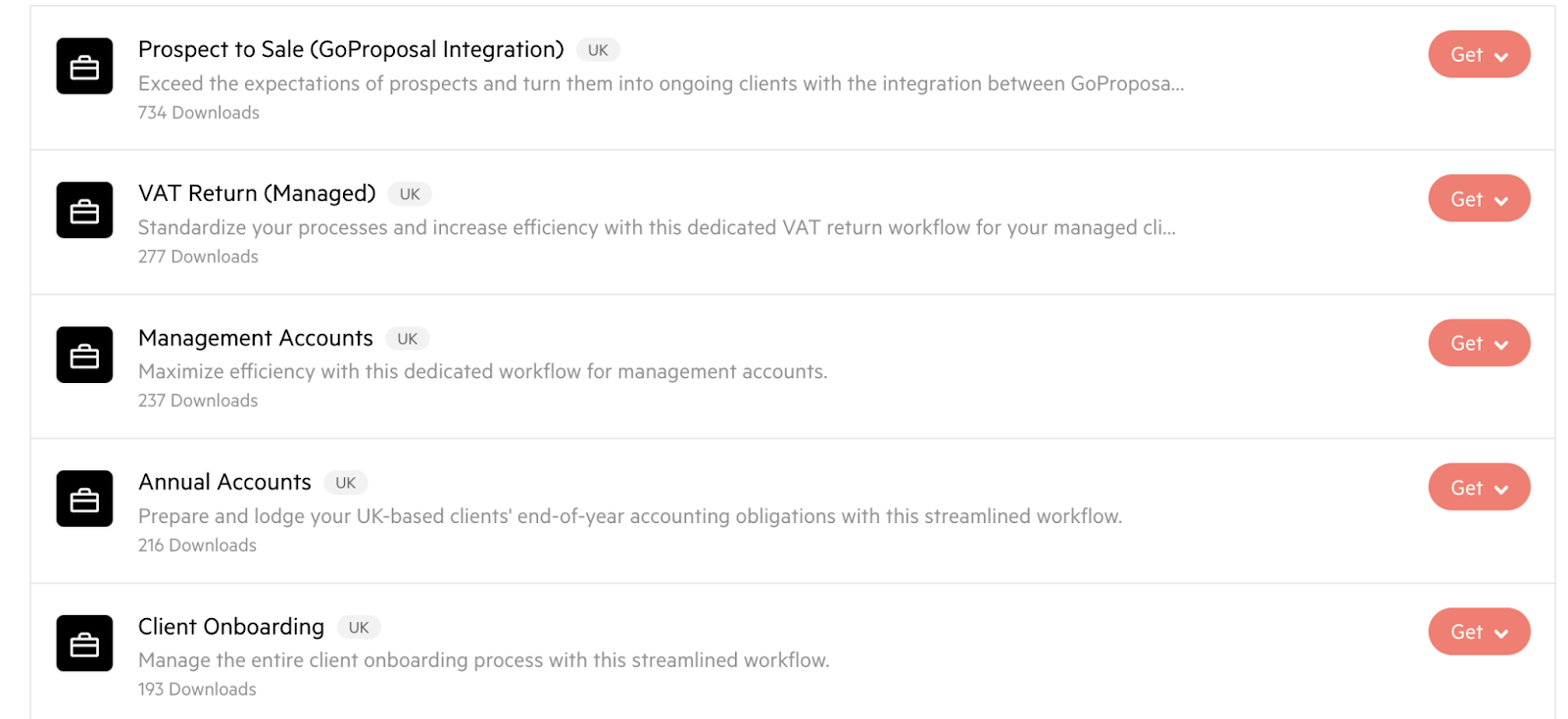
Example: Karbon HQ sells a variety of different professional template libraries for different situations.
60. Content calendars
Content calendars are hot property right now as overwhelmed business owners scramble to get their ducks in a row. The beauty is, you can create a calendar once and sell it over and over again. Think industry-specific calendars packed with key dates, promotion ideas, and content prompts to take the headache out of planning.
You can even create versions for different niches—wedding photographers, life coaches, food bloggers, etc. The more targeted, the better they’ll sell.
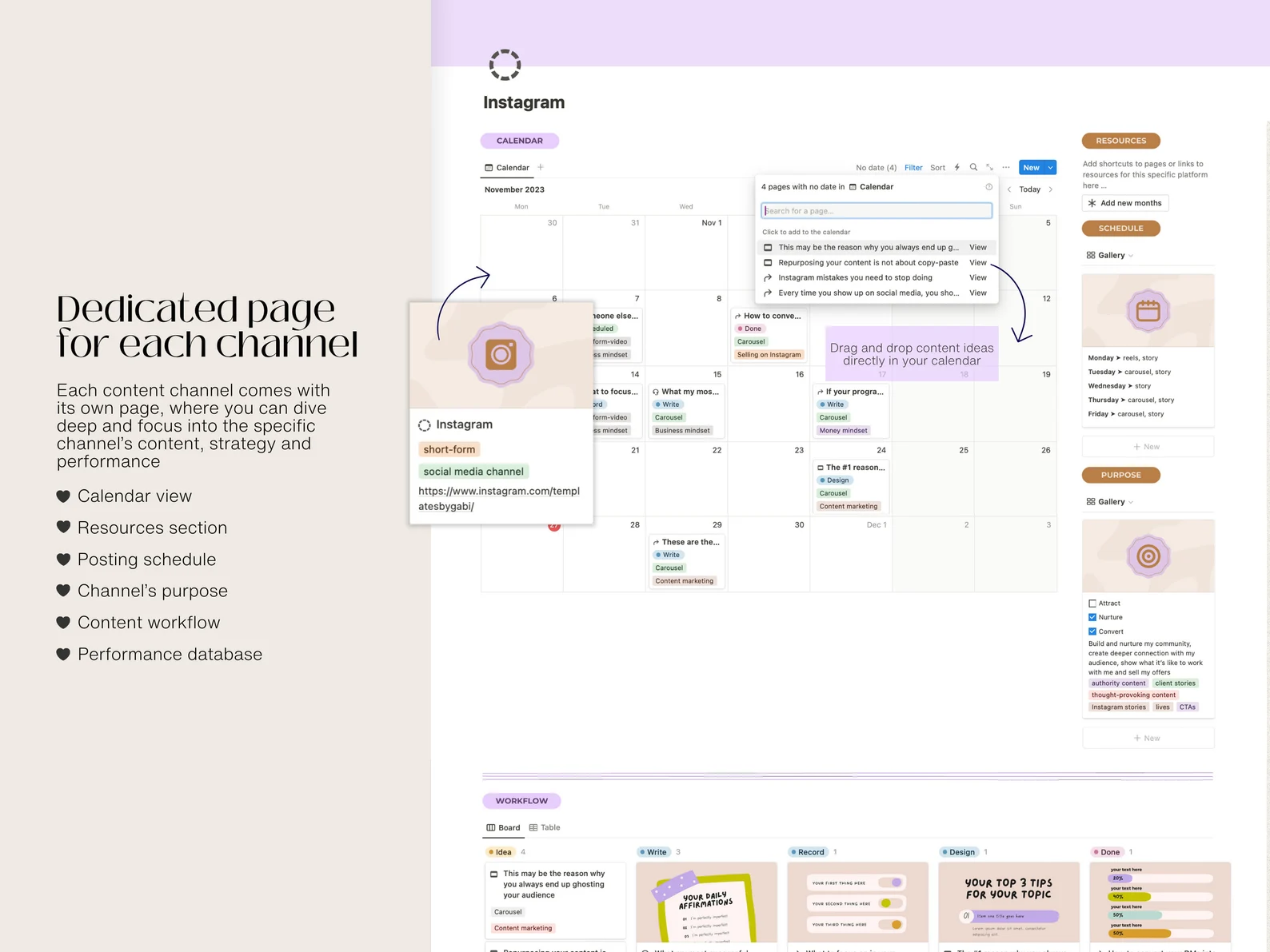
Example: Templates by Gabi has a selection of content calendars for different types of businesses and different niches.
61. Social media strategy worksheets
Most folks are completely winging it with their social media, which is why a strategy worksheet or template can be incredibly useful. You can get as detailed as you like here, with comprehensive workbooks that walk people through defining their audience, crafting their voice, and planning their content pillars.
Add extra value with sections for goal setting, competitor analysis, and metrics tracking, as well as swipe files of high-performing post examples and caption formulas.
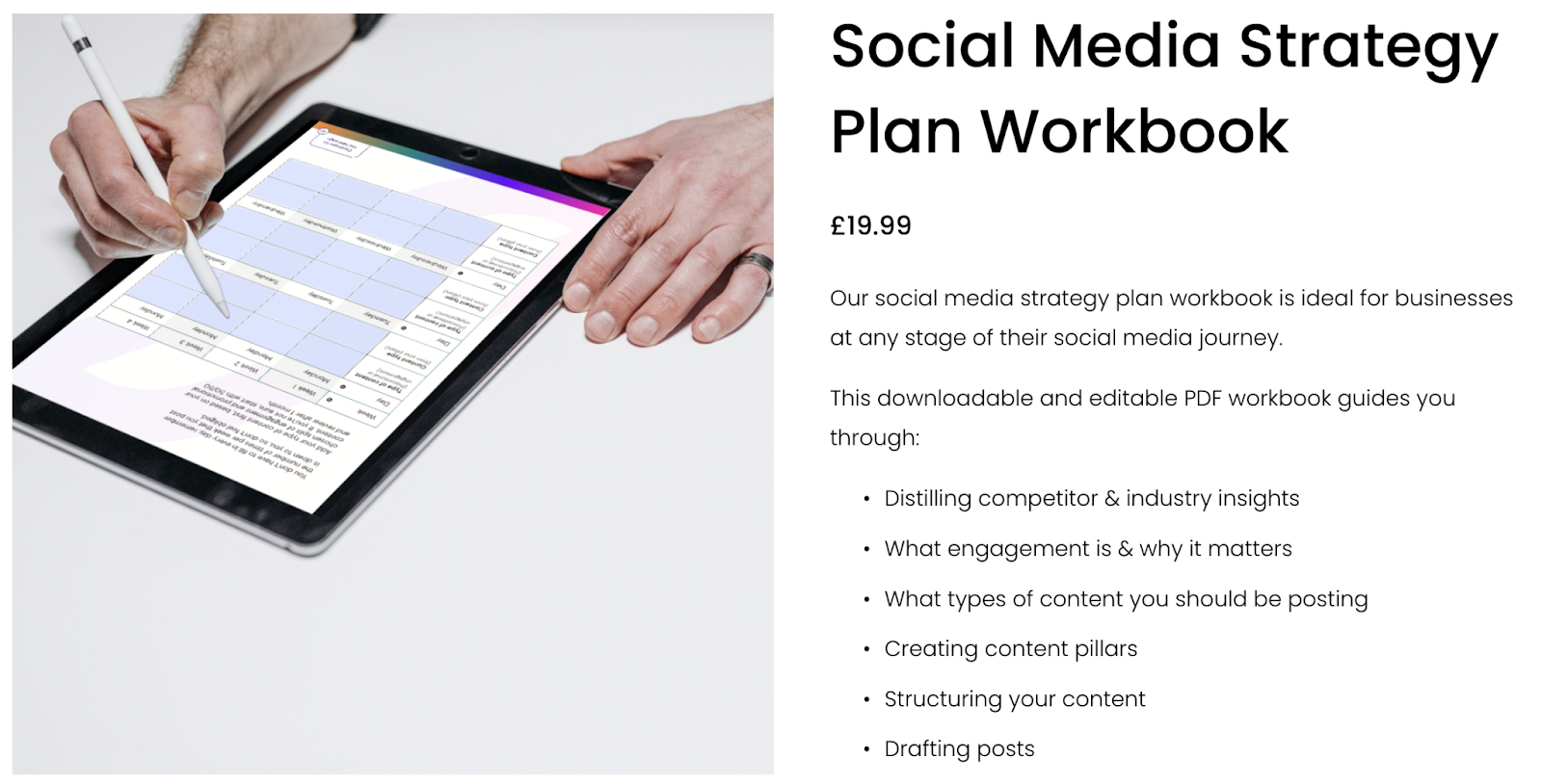
Example: The Next Gen sells a social strategy workbook complete with competitor analysis and post ideas.
62. Digital tarot cards
Digital tarot cards are blowing up right now, especially with the younger crowd who want their spiritual practice to be as mobile as they are.
The key is creating gorgeous, unique designs that stand out from the typical Rider-Waite stock images. Package them with detailed interpretation guides, spread suggestions, and even some journaling prompts. Bonus points if you create themed decks for specific purposes like self-discovery, career guidance, or love readings.

Example: Wild Moon Tarot Co features whimsical illustrations on its virtual tarot decks.
63. Virtual museum tours
Virtual museum tours exploded during the pandemic and they’ve continued to be a great way for people to explore art and culture from the comfort of their home.
Go beyond a standard walk-through video and create immersive experiences that combine high-quality visuals with expert commentary, behind-the-scenes tidbits, and interactive elements. Think specialized tours focusing on specific art movements, historical periods, or themes. Package them with downloadable activity sheets for kids, discussion guides for art clubs, or even cocktail recipes inspired by famous artworks.

Example: The National Museum of Computing regularly holds virtual tours for different audiences.
64. Digital city walking tours
People use digital city walking tours to explore their own cities or plan future trips in detail.
The secret is to create tours that tell a story—whether it's following the footsteps of famous writers in Paris, hunting down the best street art in Melbourne, or exploring hidden food gems in Tokyo. Package them with downloadable maps, local insider tips, and restaurant recommendations. Make them available in both audio and written formats, and throw in some gorgeous photography.

Example: London Walks hosts a number of virtual walks that center around specific moments in history.
65. Directories
Directories help people find businesses or vendors. The key is tapping into super-specific niches where people are desperately searching for vetted resources—think sustainable wedding vendors, certified pet behaviorists, or ethical fashion manufacturers.
The money isn't just in selling listings, it's in creating a comprehensive resource that includes detailed profiles, reviews, and direct booking capabilities.
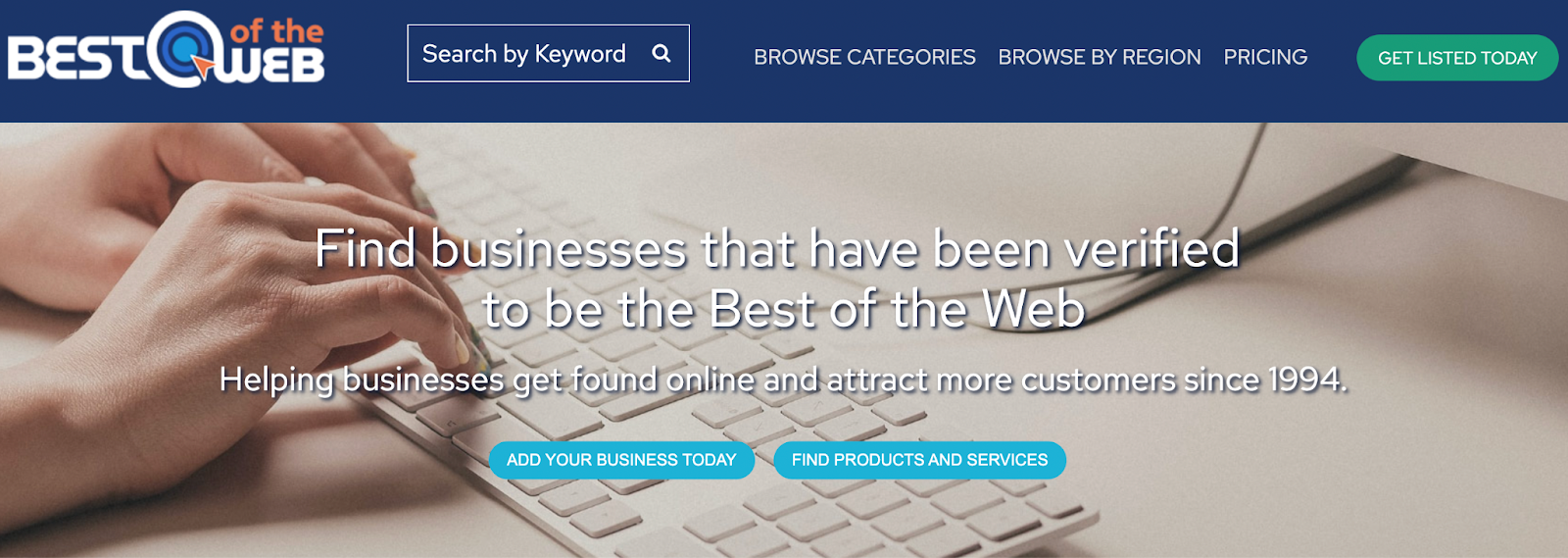
Example: Best of the Web has been around since 1998 and offers a premium place for people to find businesses in a variety of niches.
66. Meditation audios
Create themed meditation series that target specific life moments or challenges. Think "Meditations for Entrepreneurs," "Calm Commute Series," or "Parent-Child Bedtime Mindfulness."
The key is professional sound quality and unique background music (properly licensed, of course). You can sell the audio files with printable journals, habit trackers, and maybe even some beautiful artwork for an extra bump of revenue.
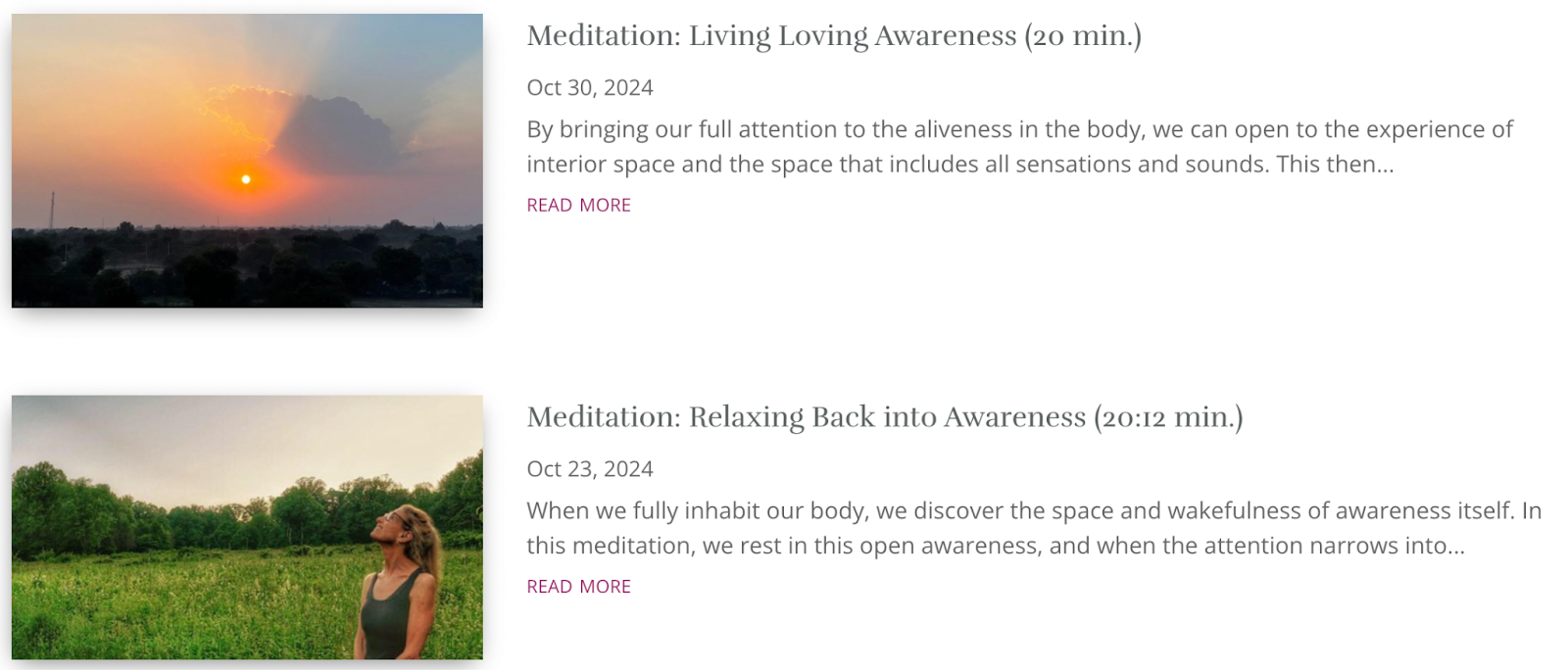
Example: Tara Brach sells meditation audios for different situations.
67. Online masterminds
Masterminds are slightly different from online courses and memberships because they bring together a tight-knit group of people who all want to reach the same goal. They tend to include group coaching calls, homework, and set activities that help members get to that goal.
Most masterminds come with premium prices because they’re so specific and because they tend to include a lot of facetime with the mastermind host. To do this well, you need to specialize in something that people want.
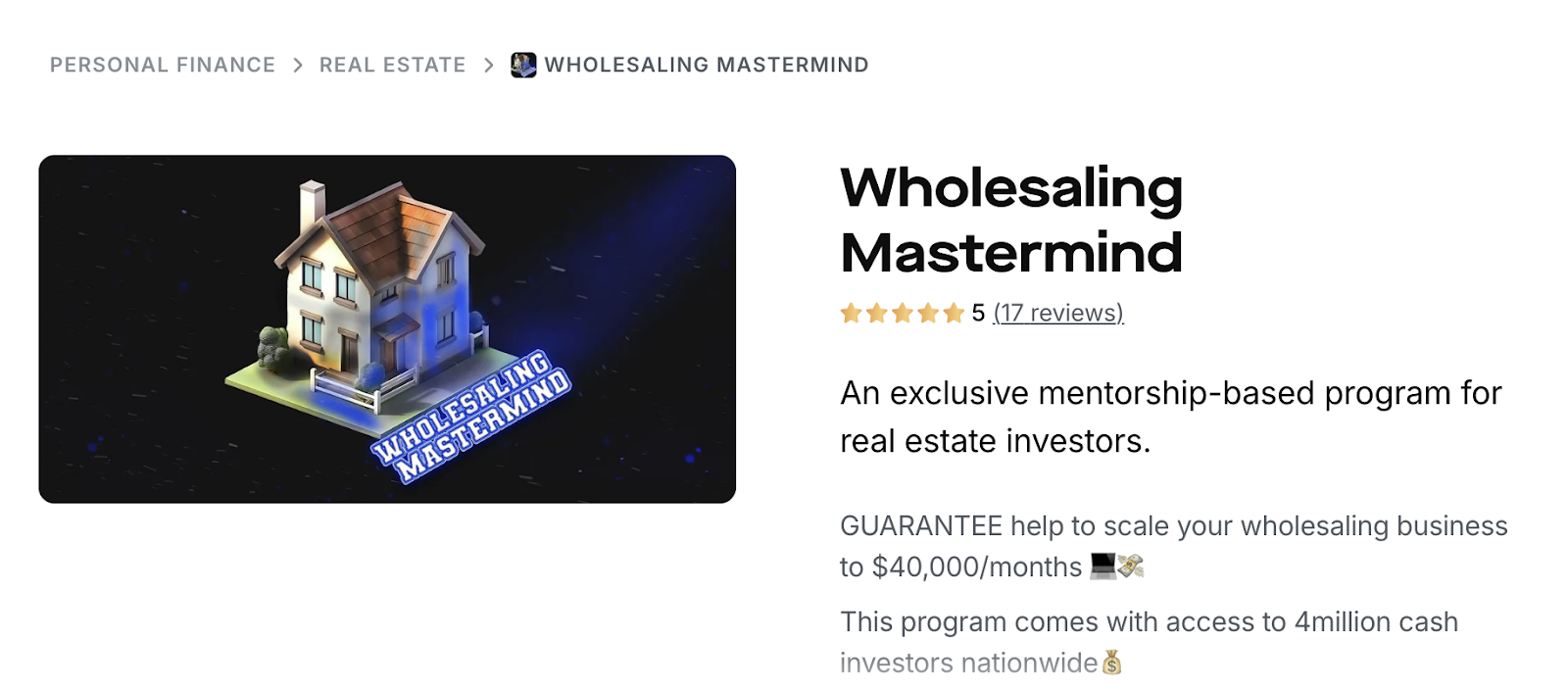
Example: This mastermind helps real estate investors build a wholesaling business.
68. Sound effects
From podcast producers to app developers, meditation teachers to online course creators, everyone needs quality audio. The key is creating themed packs that solve specific needs. Think "Zen Garden Ambience," "Startup Office Atmosphere," or "Retro Gaming Effects."
You can sell your sound effects on stock sound websites or create your own website or Whop where you can sell them to your own audience.
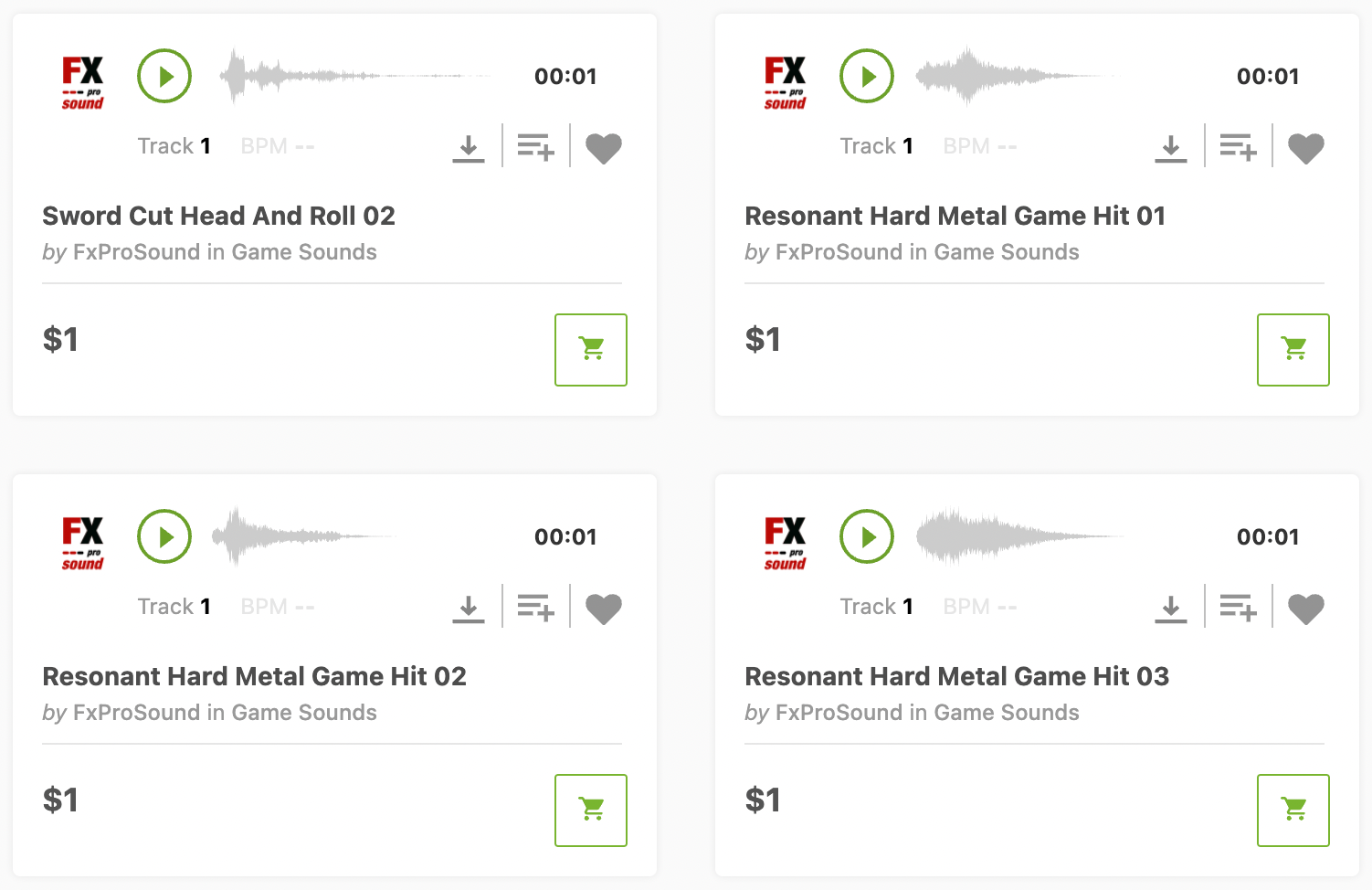
Example: FxProSound sells a variety of sound effects on different sound selling websites.
69. Niche tools
Here's where you can really geek out—create super-specific tools that solve exact problems in your niche.
Maybe it's a podcast promotion calculator, a website color scheme generator, or a recipe cost analyzer for food bloggers. The beauty of niche tools is that they practically sell themselves when you hit the right pain point.
Tip: Create both basic and premium versions to capture different market segments.
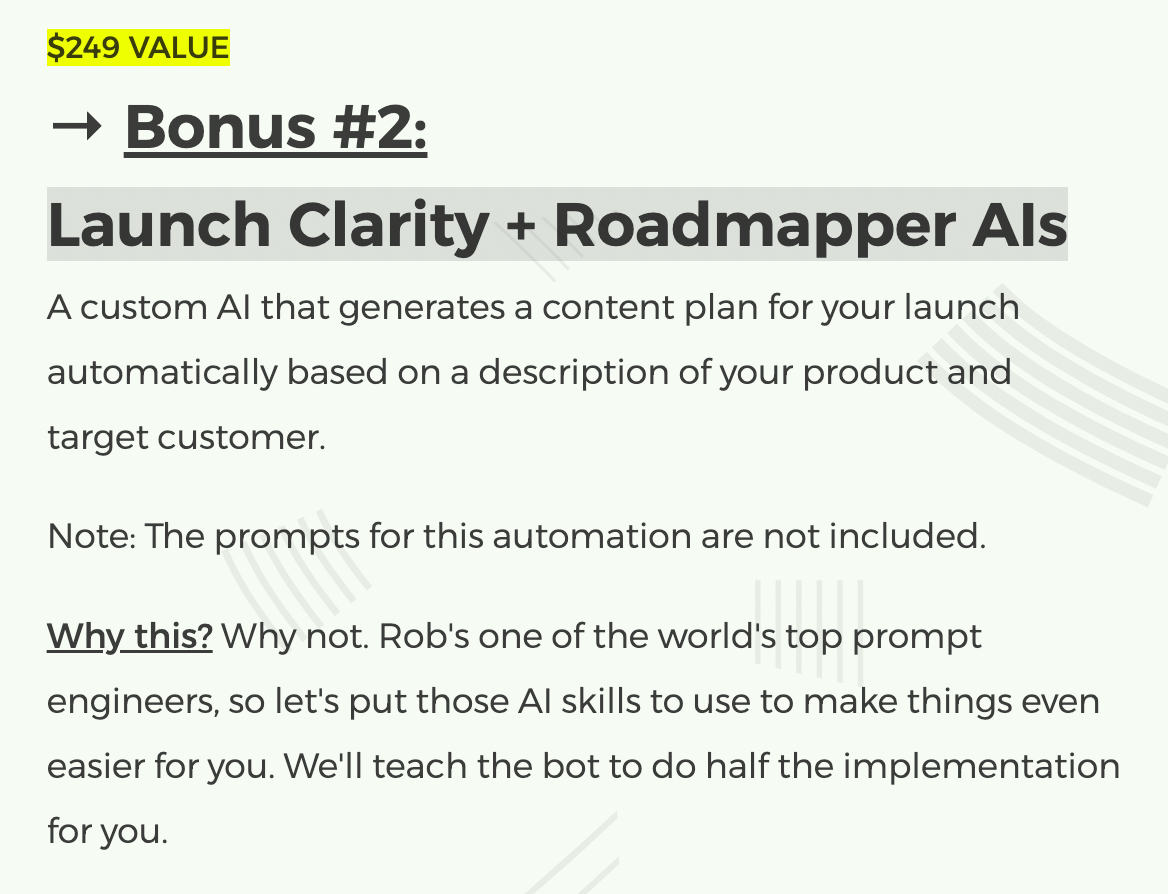
Example: Erica Schneider and Rob Lennon created a niche launch tool for their course, the Launch Content Playbook.
70. Craft patterns
Tap into the craft market by selling patterns with crystal-clear instructions and lots of how-to photos. Consider creating patterns for trending items (like chunky knit blankets) but with a unique twist and package them with video tutorials, size variations, and material calculators.
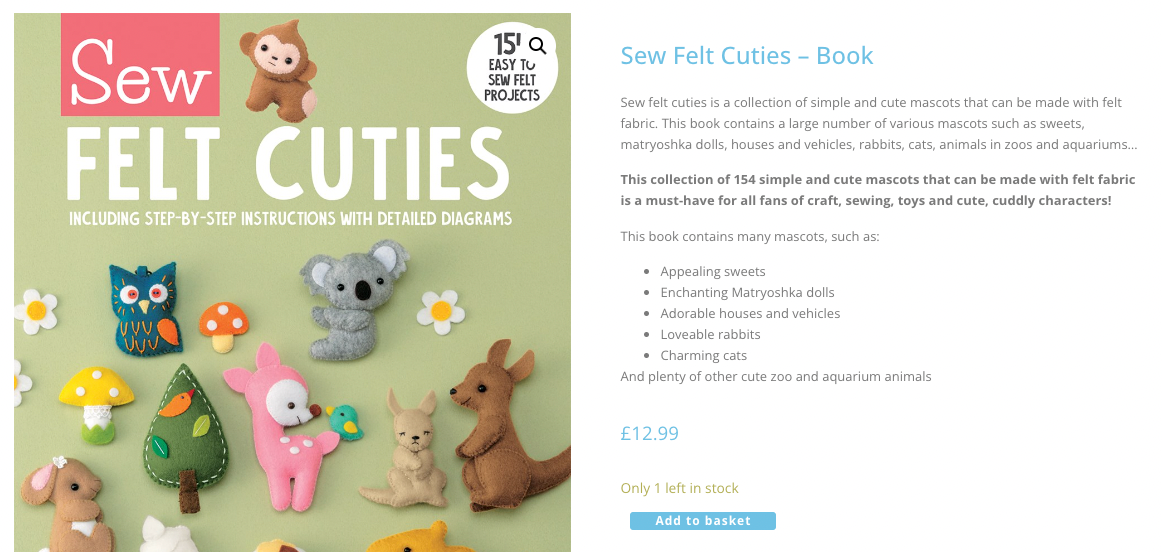
Example: This digital download shows people how to make felt toys.
71. Ezines and digital magazines
What a blast from the past! The secret to successful ezines is creating highly targeted content that readers can't find anywhere else. Think industry deep-dives, expert interviews, and exclusive how-tos with downloadable resources, templates, and actionable worksheets. You can even create annual collections and special editions or offer white-label versions that businesses can customize for their own audiences.
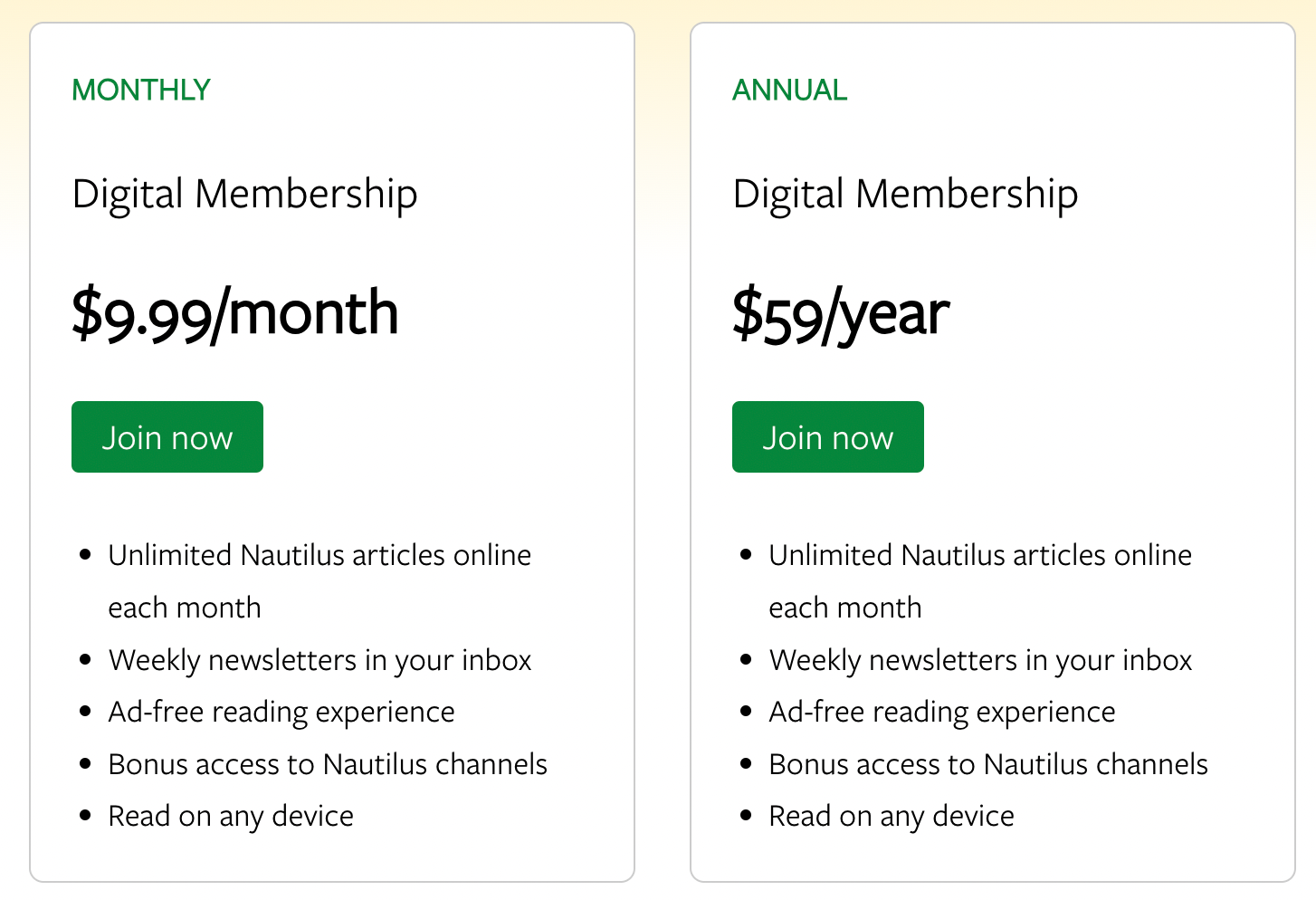
Example: Nautilus shares a new set of science and psychology focused digital stories each quarter.
72. Teaching materials
Educators are desperately seeking fresh, engaging materials that work both in-person and online. Create comprehensive bundles including lesson plans, worksheets, assessment tools, and interactive activities. Take it one step further and make everything customizable and include options for different learning styles. Team your flashcards and learning materials with progress-tracking tools, parent communication templates, and modification suggestions for special needs students.
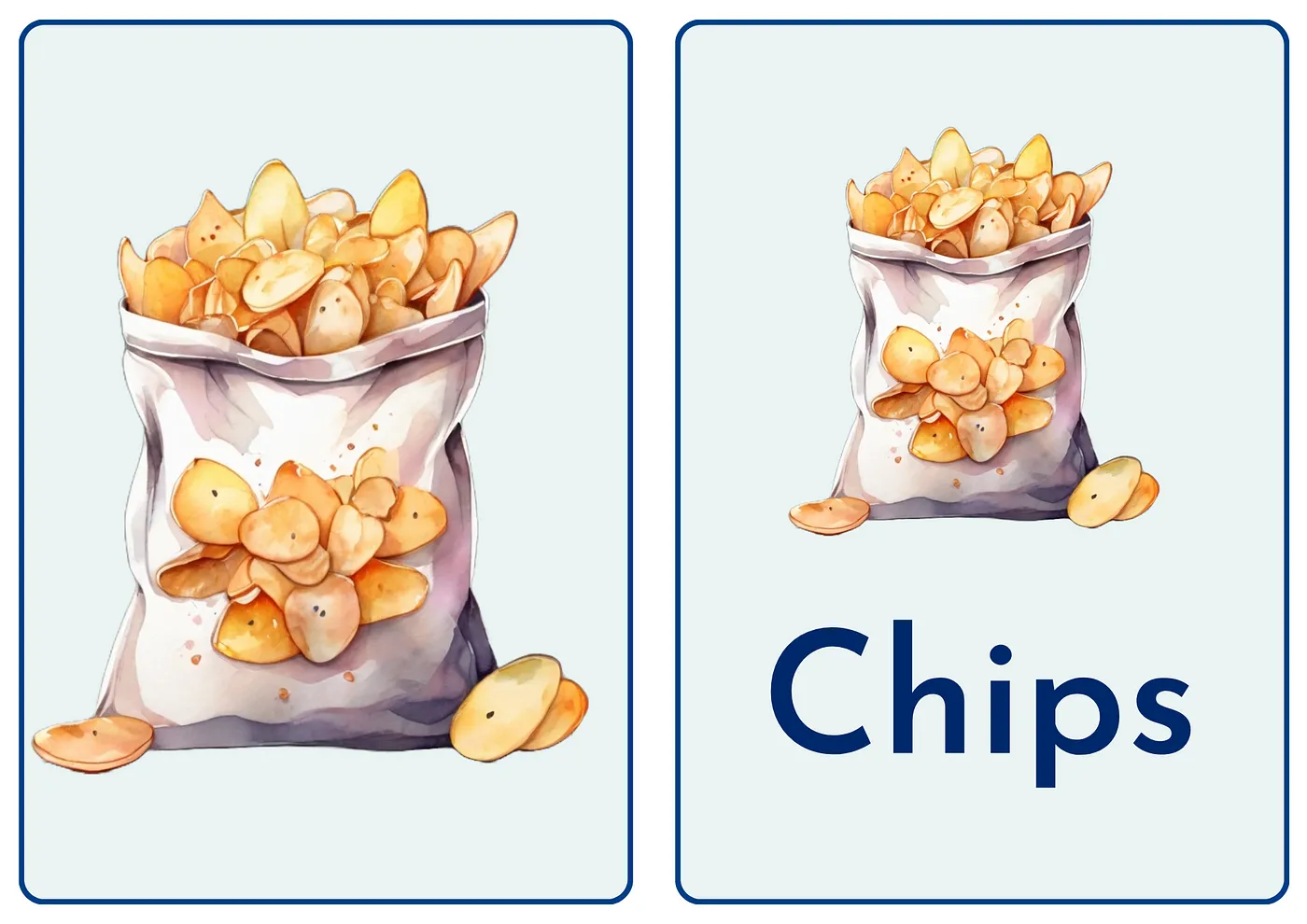
Example: Paul Rose earned passive income by selling flashcards made using AI.
73. Study guides
Students will always need study guides, but they want something different from the boring old PDFs. Create interactive study materials that combine clear explanations with practice questions, memory techniques, and quick reference charts. Include different learning formats (visual, auditory, kinesthetic) and practice test generators.
Tip: You can also upload your study notes to various sites to earn extra income.
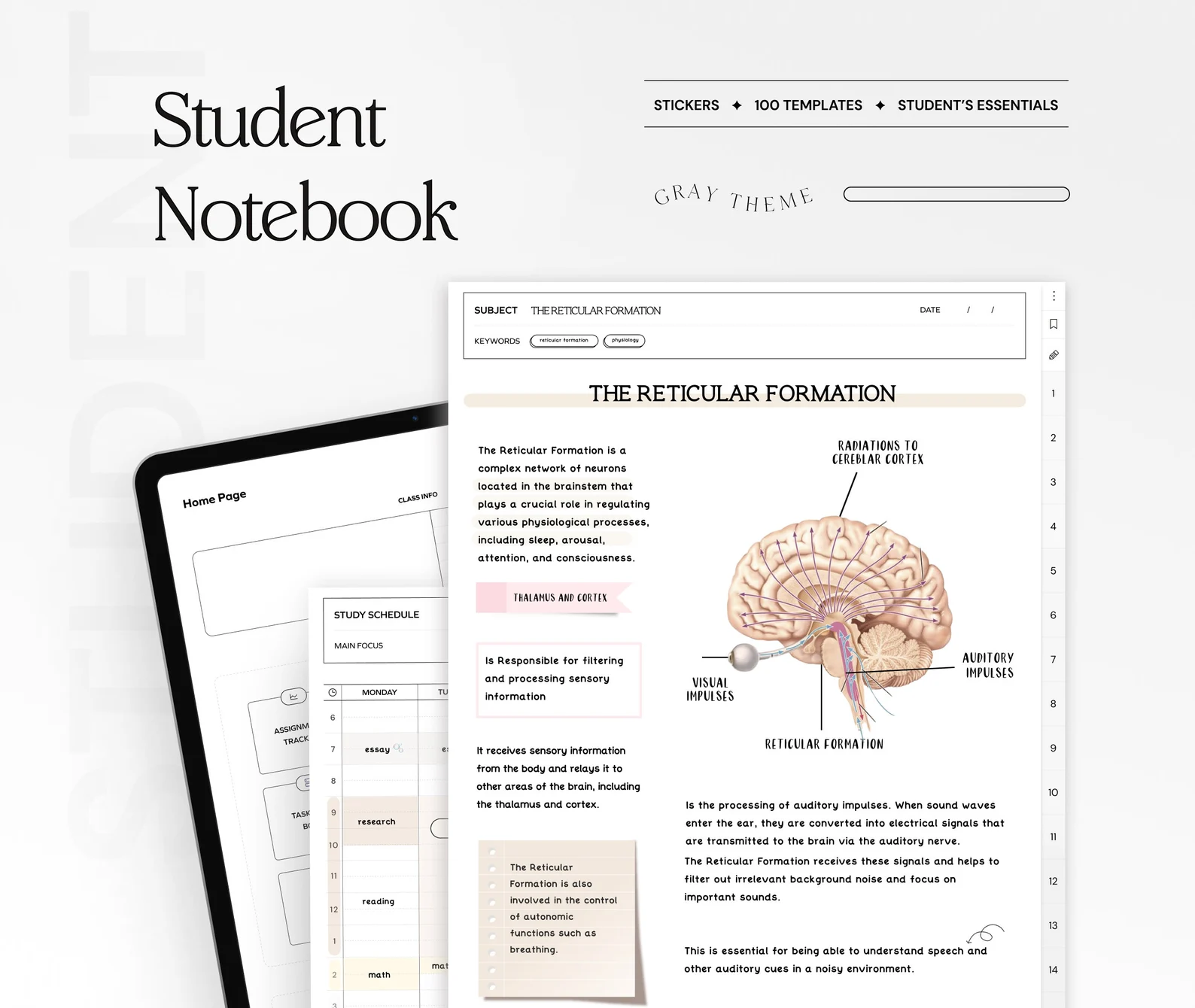
Example: The Student Notebook sells study guides for different subjects.
74. Social media prompts
Everyone's telling businesses they need to be on social media, but nobody's giving them the actual words to say—here’s your opportunity.
Create extensive prompt libraries for different industries, occasions, and content types. Think daily conversation starters, behind-the-scenes prompts, and engagement questions packaged up with hashtag suggestions, best posting times, and engagement tracking sheets.
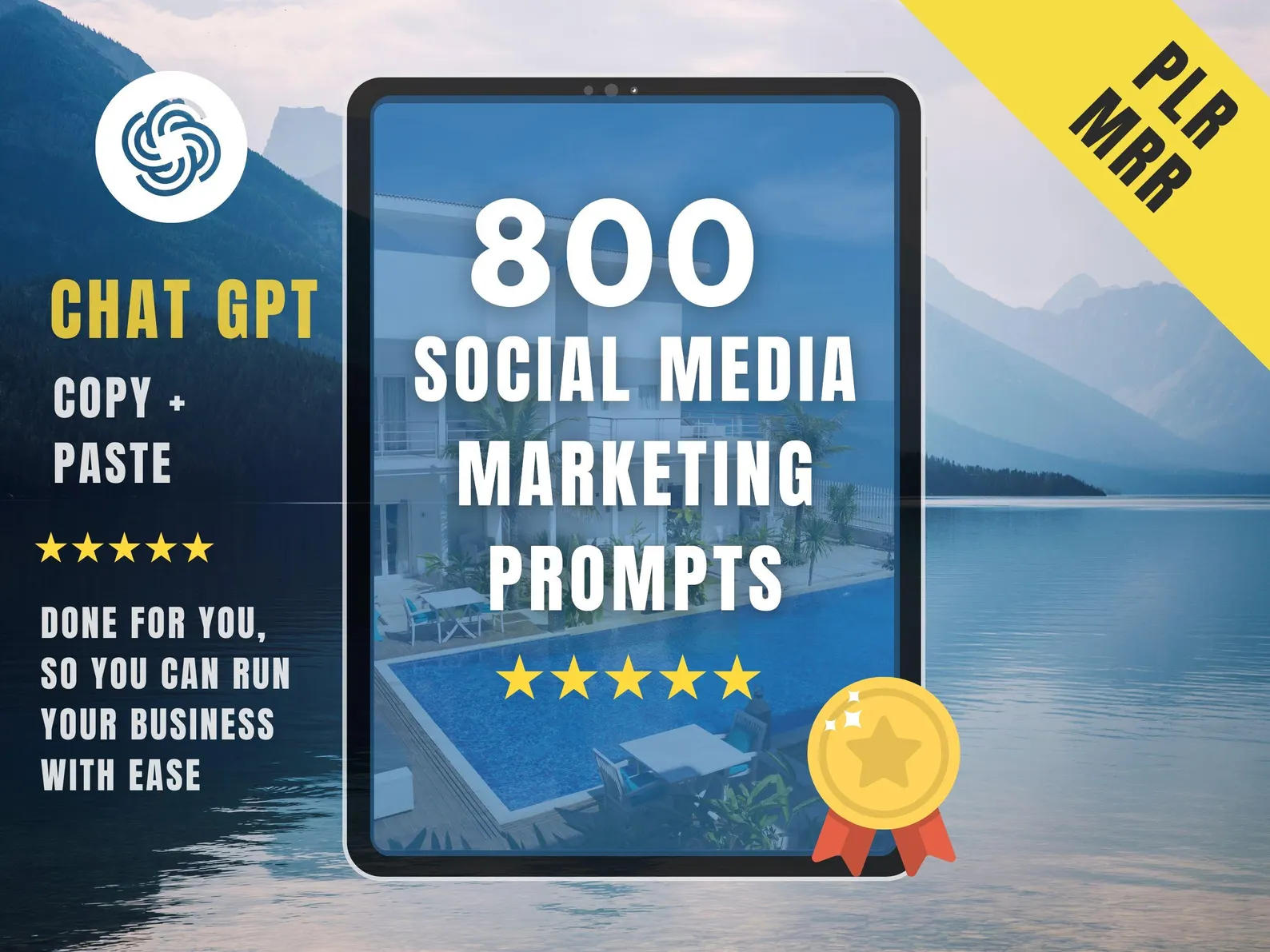
Example: Maria from Ascend Her sells 800+ social media prompts.
75. Professional templates and documents
Professional templates save people time and make them look good. Create bundles for different industries and needs: contracts for freelancers, proposals for agencies, and invoices for service providers.
The key is making them both legally sound and beautifully designed. Package them with customization guides, usage tips, and regular updates as laws or industry standards change. Try including both Word and Google Docs versions, plus how-to videos for easy customization.
Example: Kat Boogaard sells a freelance invoicing template.
How to create digital products

Hopefully, your creative juices are well and truly flowing by this point and you’ve got lots of digital product ideas buzzing around your head. Once you’ve decided this is the path you want to take, here’s how to get started.
1. Identify your audience
Determine who you want to create a digital product for. It helps if you know an audience well (or, even better, are the audience). For example, if you’re a parent of young children, you might decide to create digital products for parents or children based on what you already know.
Try to be specific with your audience too — instead of choosing “women”, dig deeper and choose a segment like “20-25-year-old women who enjoy yoga but don’t have the money or are too busy to attend weekly in-person classes.”
Here are some questions you can think about when determining your audience:
- How old are they?
- Where do they live?
- What are their interests?
- What problems do they face in day-to-day life?
- What are their biggest challenges?
- Why might they need a digital product?
Not only will this help you market your digital products to the right people, but it’ll ensure you’re creating products that they really want and need.
2. Brainstorm product ideas
Now you know who you want to create digital products for, start thinking about what you’re going to create for them. While reading this list, did anything jump out at you? It’s always best to choose a format you feel most comfortable with. For example, if you don’t enjoy being in front of the camera, don’t make a video course or film a masterclass.
But it’s not just about you. It’s also about your target audience and what they want.
When you identify your audience, you should come up with some challenges and interests they have. You can use this information to brainstorm what kind of products might suit their needs. For example, 20-25-year-old women who are too busy to attend in-person yoga classes might relish an online membership with weekly online classes.
3. Create your digital product
This is where the fun starts. You’ve got your audience and you’ve got an idea, which means it’s time to create your digital product. If it’s a one-off product, like a recorded masterclass or an app, it helps to map out your production plan. Do you need any help? What research do you need to do beforehand?
Then, make use of online tools to help make your product look as professional as possible. Here are some tools that might come in handy:
- Canva
- Creative Market
- Loom
- Notion
This is also a good opportunity to think about where your digital product is going to live. Do you need to create a standalone website? Or can you harness make an existing platform, like Creative Market, Etsy, or Whop?
4. Promote your digital product
Once you’ve made your digital product and it’s ready to be released into the wild, think about how you’re going to spread the word. It helps to have an existing platform you can market on straight away, but most creators start from square one with no followers and no audience.
It’s much easier to choose one or two places to promote your product instead of spreading yourself thin across every platform you can think of, so decide where you want to spend your time (and, more importantly, where your target audience spends their time). For example, you might market your online yoga classes for 20-25-year-old women on TikTok and Instagram, as those platforms are most popular among that age group.
Try out a few platforms and see what works best:
- Share Instagram Reels and Stories with a link to your product
- Create a free lead magnet to build your email list
- Share your digital product in relevant Facebook groups
- Run paid ads on social media
- Upload your digital product to existing, searchable marketplaces
- Build a website and write content to attract people searching for products like yours
5. Monitor and learn from your results
The best way to make the best digital product is through trial and error and learning from your mistakes. You won’t make millions on your first day, but if you get feedback from customers and tweak your offering to something much-needed and valued, you can make a decent chunk of passive income over time (or a full-time income further down the line).
Where to sell digital products
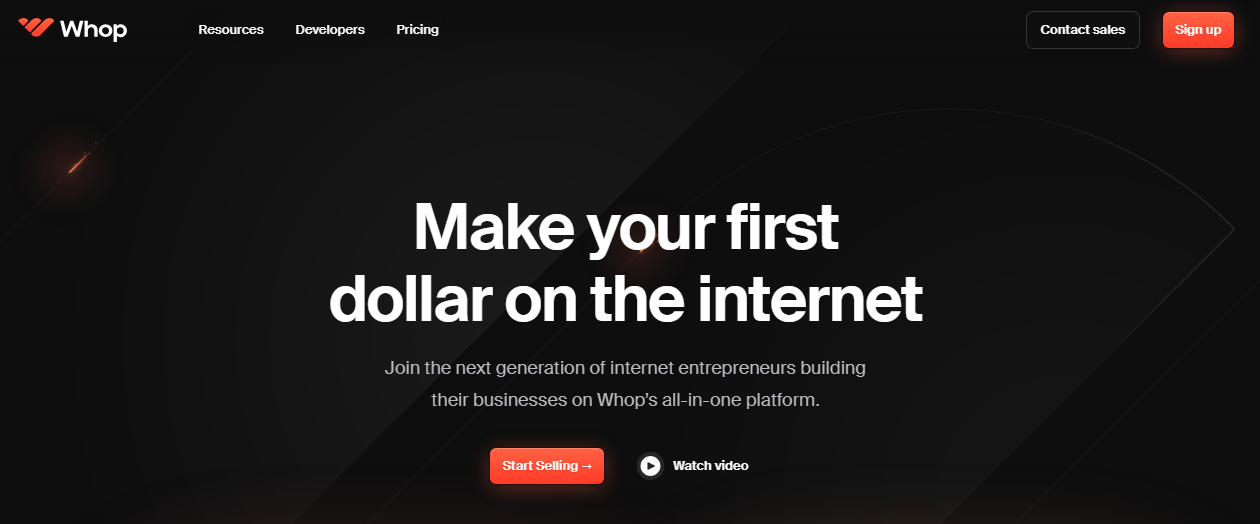
Once you’re ready to launch your digital product, you need to decide where to sell it. There’s a wealth of platforms designed for selling digital products, including Whop. You can find almost every type of digital product there, from ebooks and templates to memberships, online courses and masterclasses.
Ready to get started? It’s really easy to sell your digital products on Whop:
- Create an account on Whop.com
- Create your own whop (this is a hub for your digital products and community)
- Add apps to your whop for the products that you want to sell (you can add as many or few as you like)
- Manage your whop products by setting up access settings (private, public, free, or paid)
- Go through the handy launch checklist and voila! Your digital product is ready to go out into the world
Other places to create and sell digital products
Ultimately, the platform you choose to create your digital product will depend on the type of product you’re selling, but here are some other popular places to sell digital products:
Digital product download sites
Best for: Ebooks, guides, planners, calendars, printables, and trackers.
Sites to use: Whop, Gumroad, Lemon Squeezy, Amazon, Etsy.
App stores and marketplaces
Best for: Apps, software, tools, and video games.
Sites to use: Whop, Apple Store, Shopify App Store, Google Play.
Digital community platforms
Best for: Memberships, online communities, subscriptions.
Sites to use: Whop, Slack, Circle.
Website template marketplaces
Best for: Website templates, Photoshop brushes.
Sites to use: ThemeForest, Creative Market, Elementor.
Online course platforms
Best for: Online courses, content libraries, email courses, video courses.
Sites to use: Whop, Podia, Thinkific, Teachable.
Stock photo marketplaces
Best for: Stock photos, stock videos.
Sites to use: Shutterstock, Unsplash.
Ecommerce platforms
Best for: Independently selling digital products, digital artwork, printables, and courses.
Sites to use: Whop, WooCommerce, Squarespace
How to market digital products
The hardest part of selling a digital product isn’t coming up with digital product ideas or even creating your product — it’s finding people to buy it. If you don’t already have a huge audience waiting with bated breath, you’ll need to promote your digital product in the right places to the right people.
Here are some ways you can start marketing your digital product:
- Run paid ads: get eyeballs on your digital product quickly by running ad campaigns on social media.
- Partner with affiliates: bring industry influencers (small or big) on board to promote your product to their existing audiences in exchange for a slice of the sale price.
- Collect testimonials: gather social proof in the form of reviews and testimonials to share on social media and your product landing page.
- Optimize your website: attract shoppers from the search results by implementing relevant keywords and on-page SEO tactics.
- Use social media: set up social media accounts on your favorite platforms and create engaging content to grow your audience — don’t forget to direct people to your digital product in the captions and your bio.
- Film YouTube videos: create walkthroughs or tutorials that complement your digital product and share them on YouTube.
- Start an email newsletter: nurture connections by encouraging people to join your email list and sharing thoughtful, relevant content with them.
- Sell on an existing marketplace: Whop, Amazon, Etsy - these are all successful digital marketplaces where potential customers can easily find your product by browsing through categories.
Discover the best digital products to sell in 2025
Digital products aren’t going anywhere. More people are choosing to buy digital versions of traditional media and jumping on the bandwagon could see you earning a decent chunk of passive income with relatively little effort.
Start by brainstorming digital product ideas that align with your interests and skillset and deciding the best format for them to take. Once you’ve created your product, choose a few channels to promote it on and spread the word.
It takes time to build a customer base, so don’t be disheartened if things don’t happen overnight. Just keep plugging away at it and you’ll start to see a snowball effect over time.
You can browse Whop.com to find the best digital products to sell online.
Once you’ve solidified your idea and created your digital product, you can start selling on Whop. It takes less than 10 minutes to get started and you can enjoy all of Whop's features, like 24/7 customer service and a dashboard full of tools to help you manage and grow your business.





